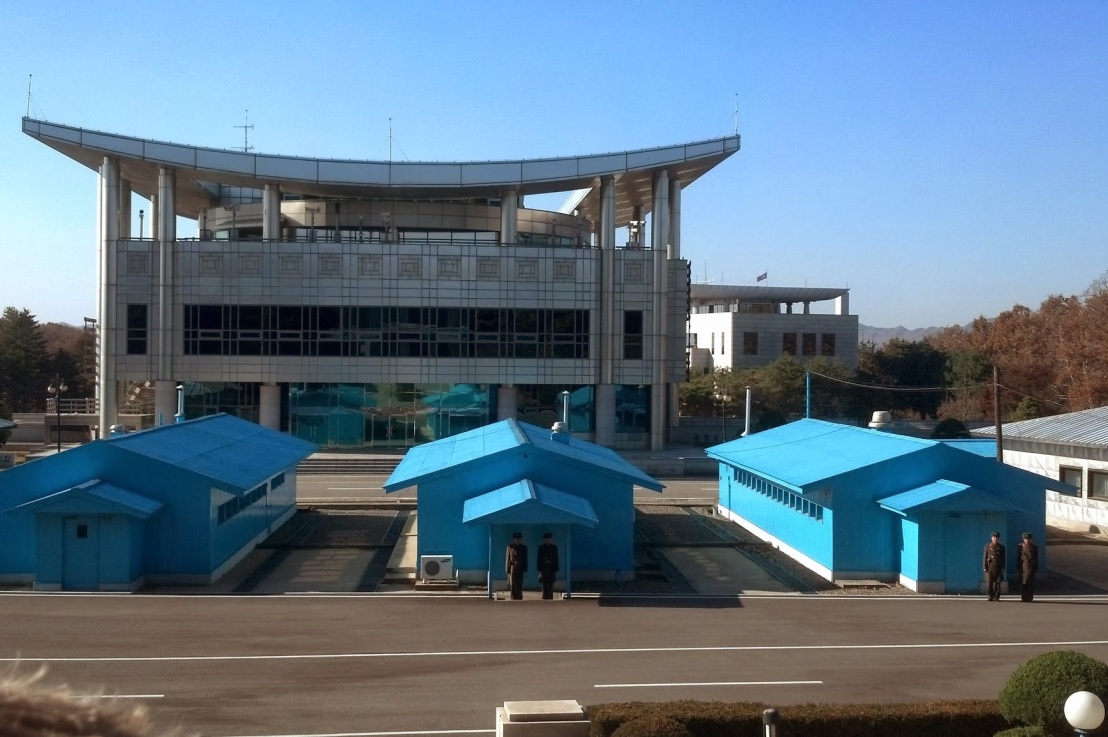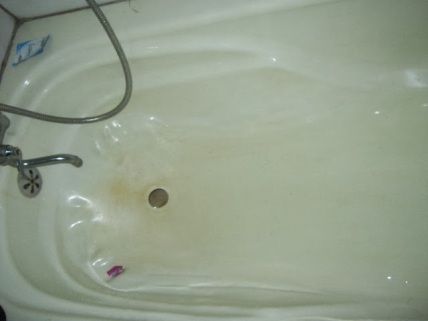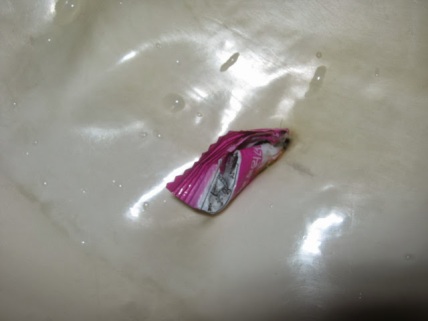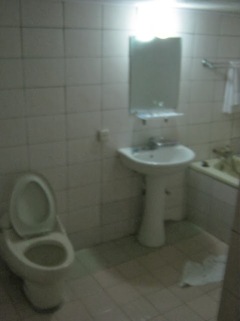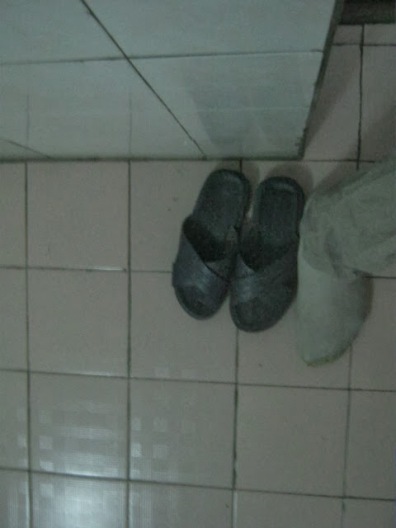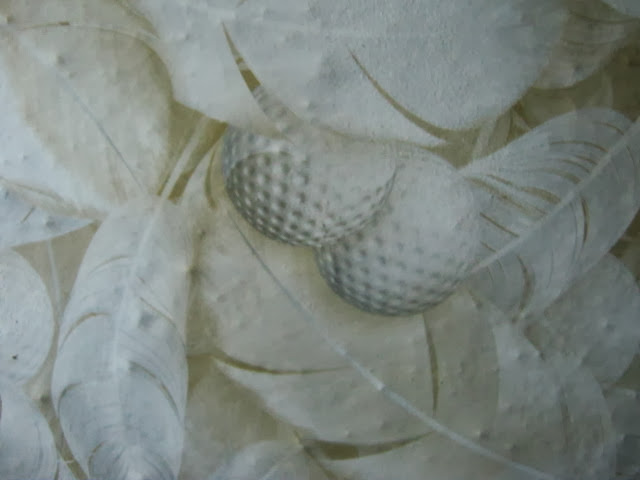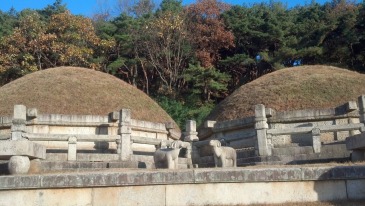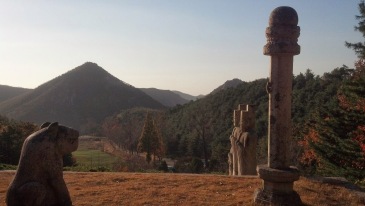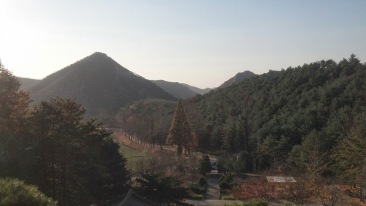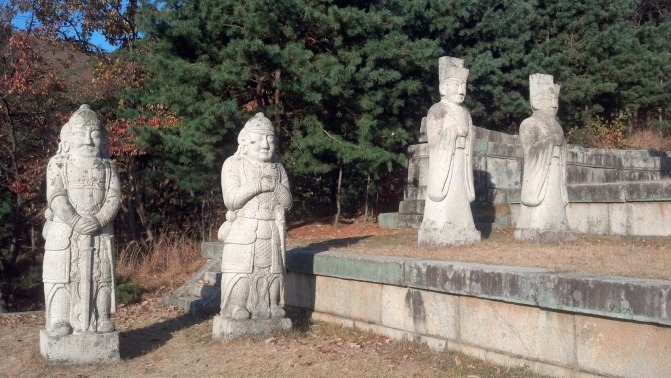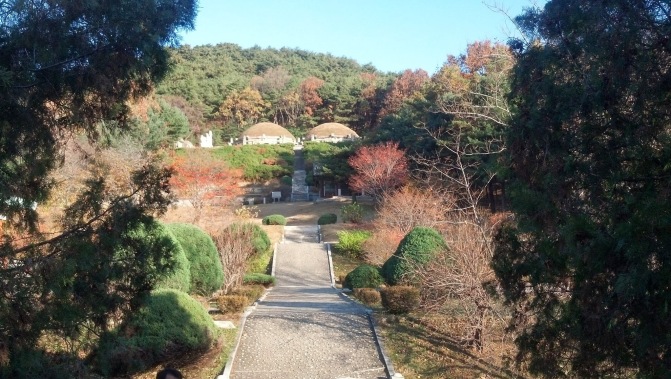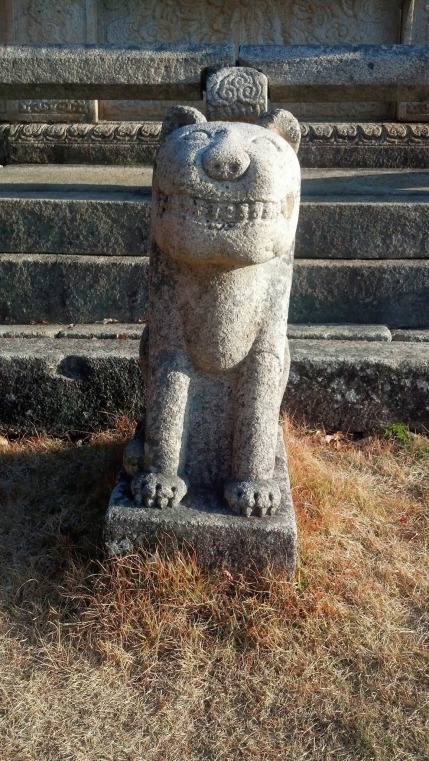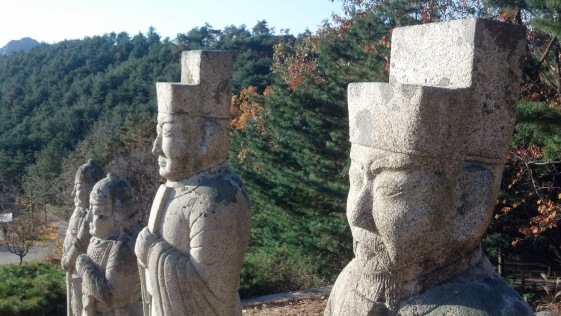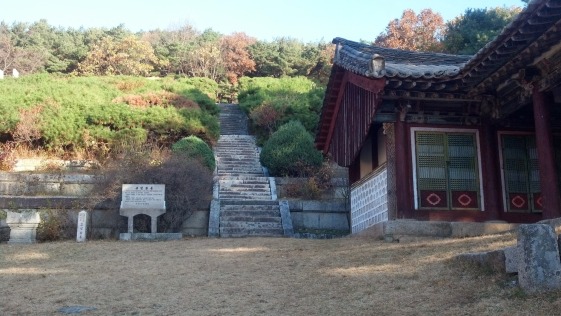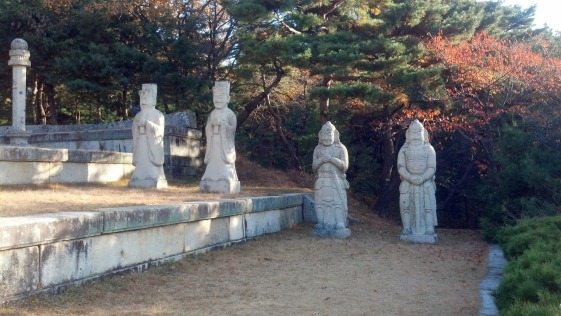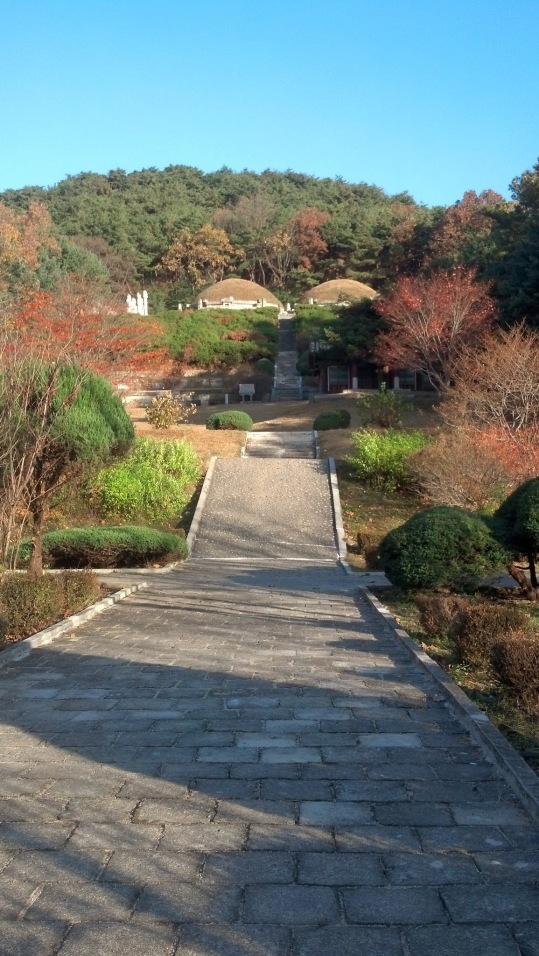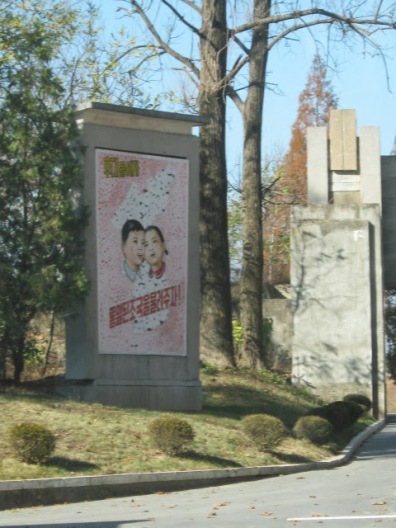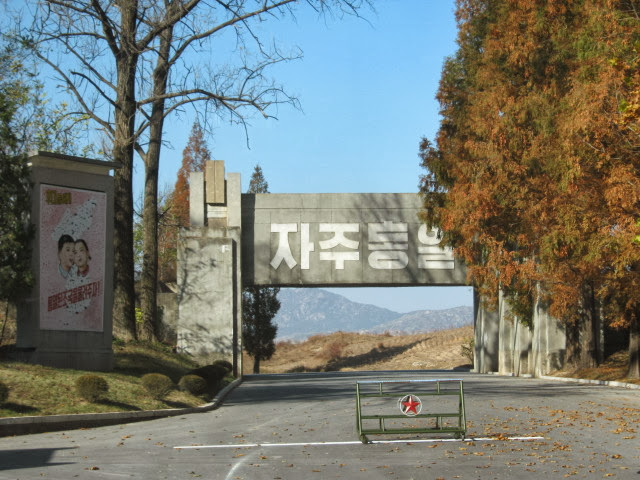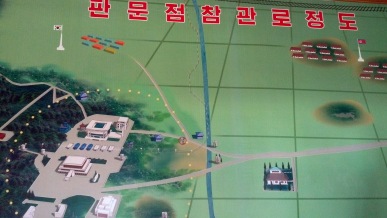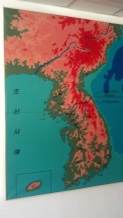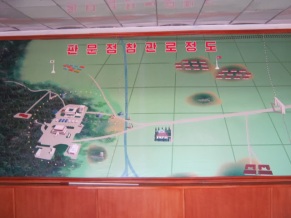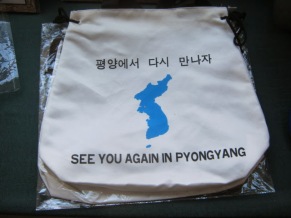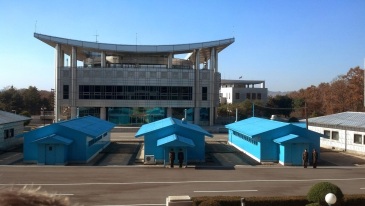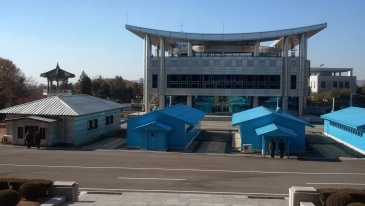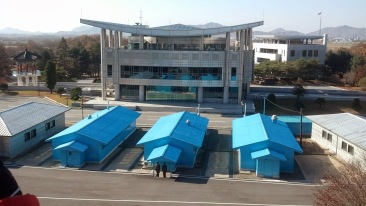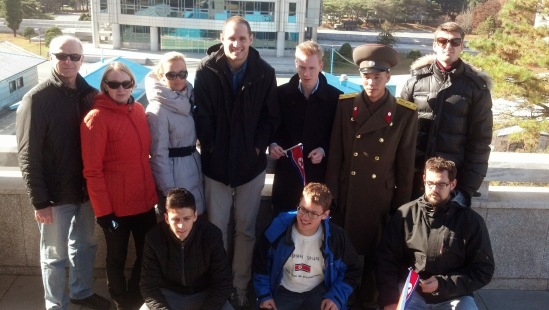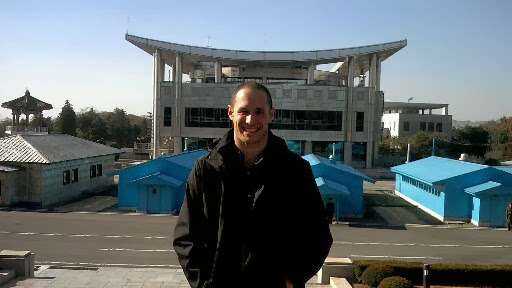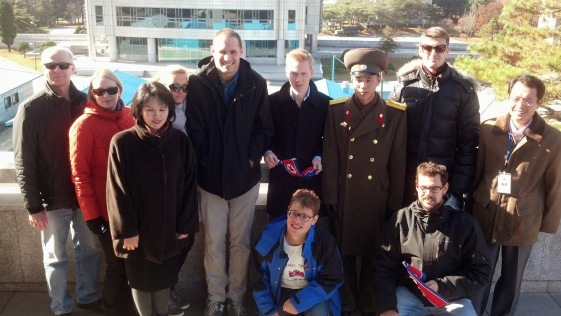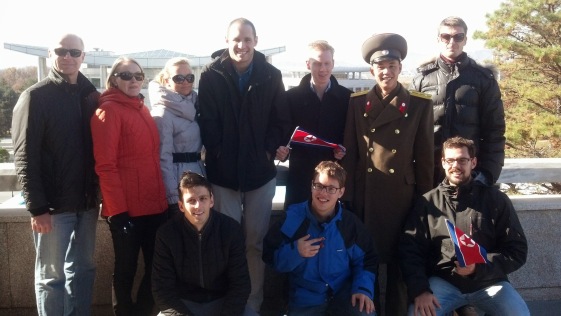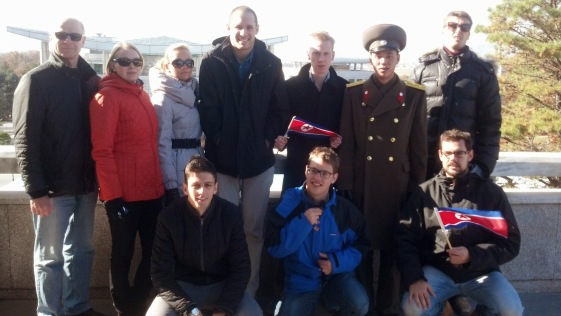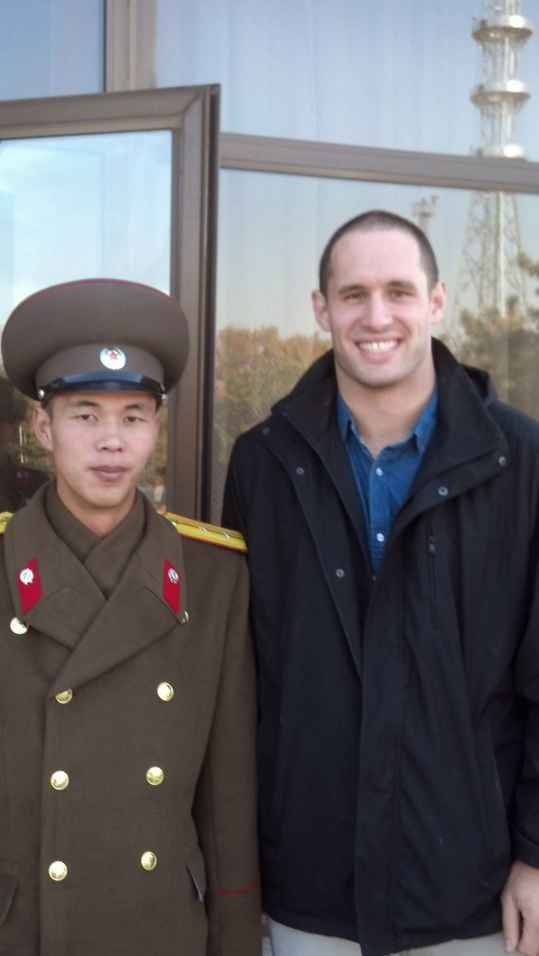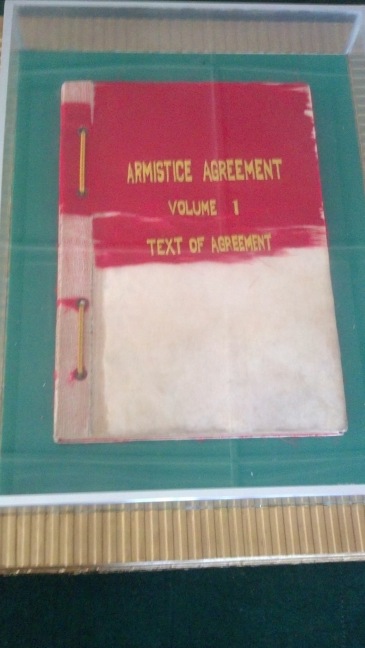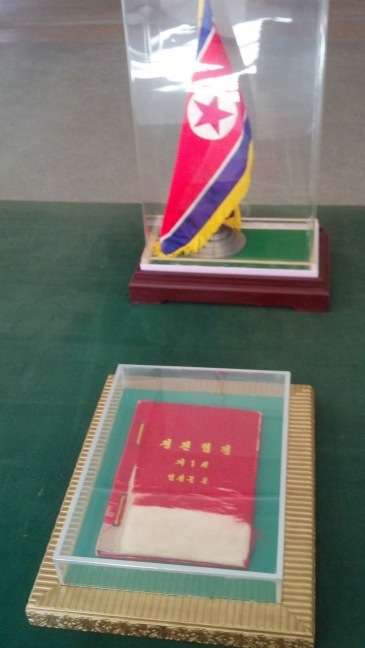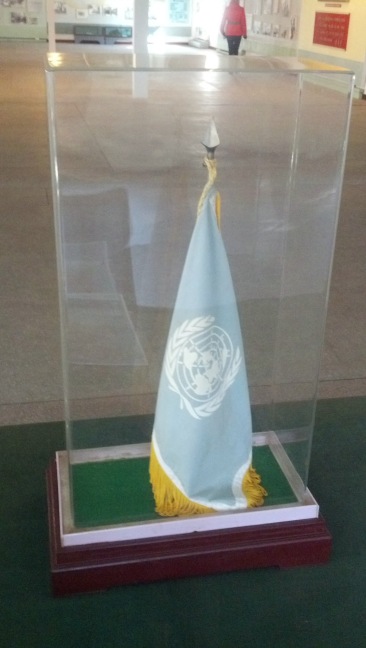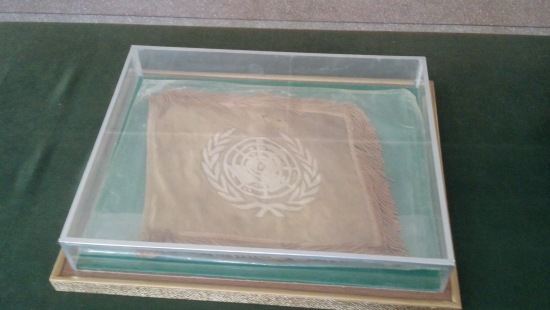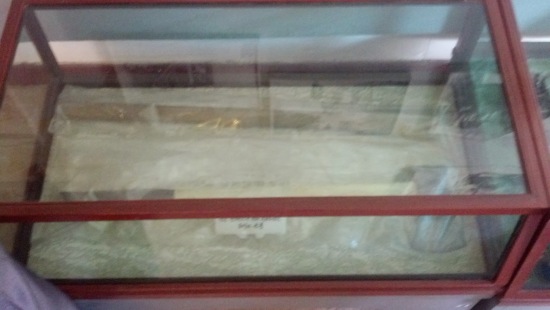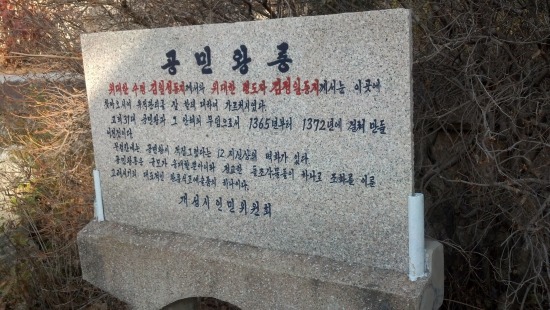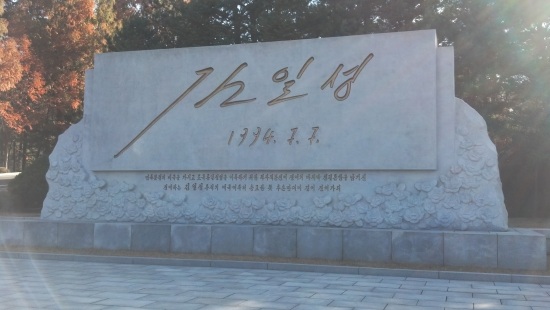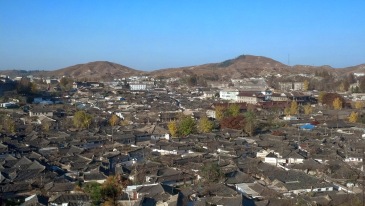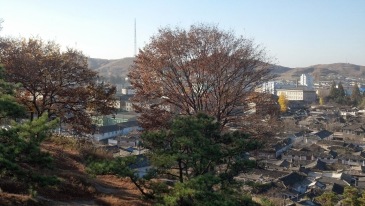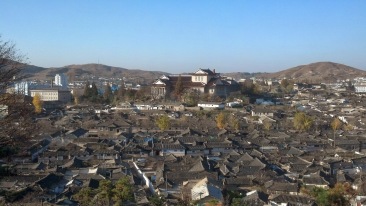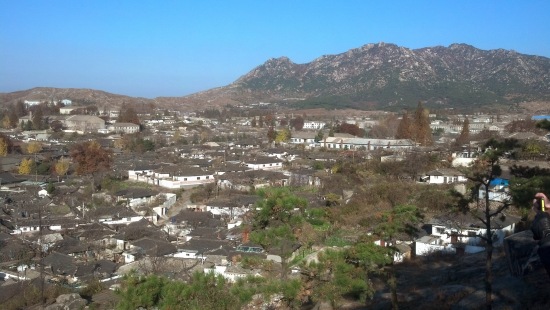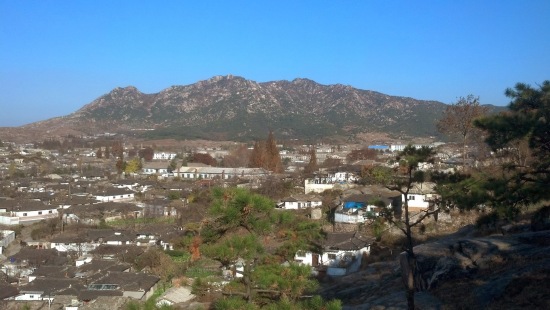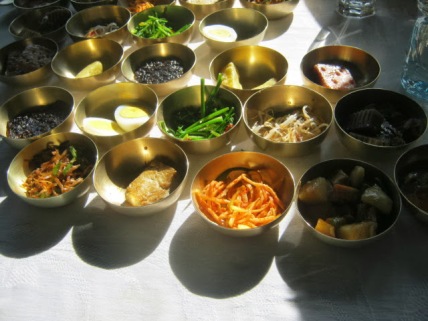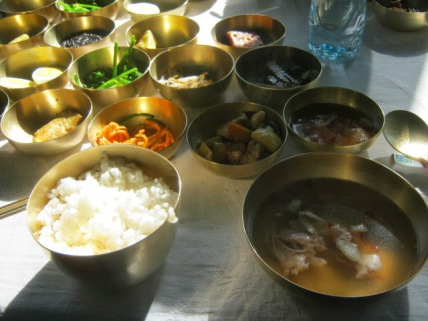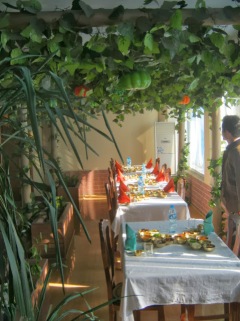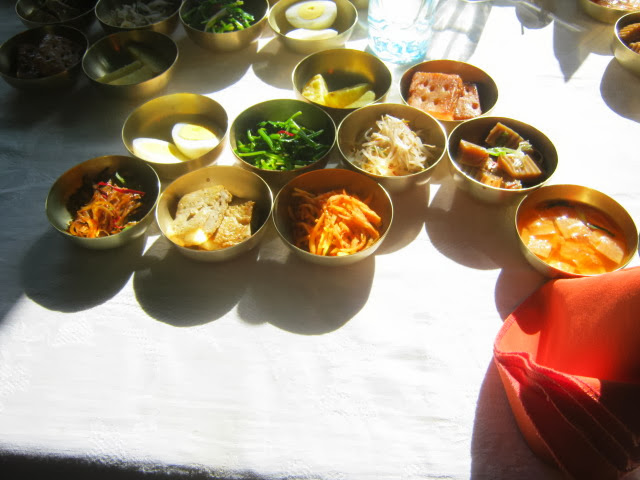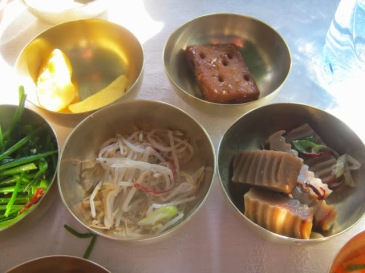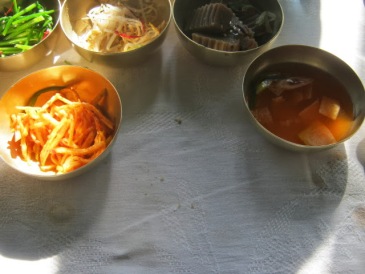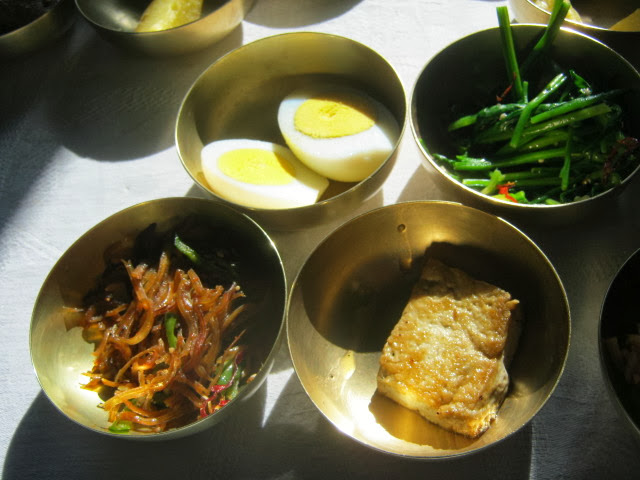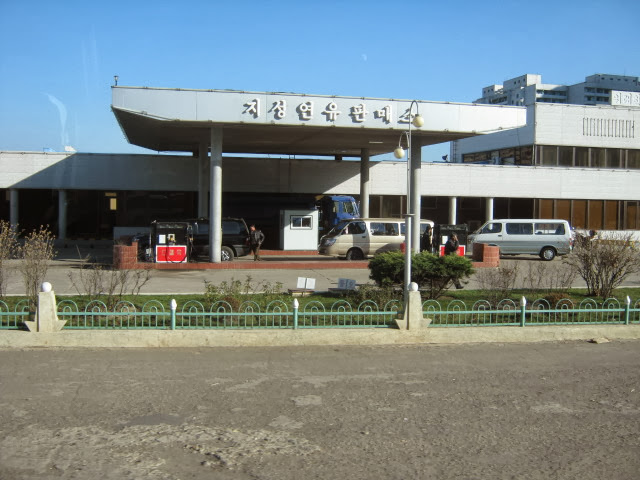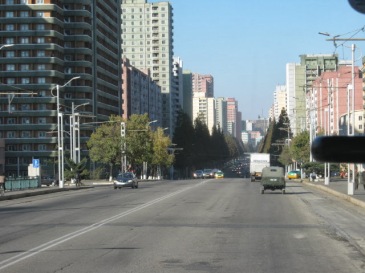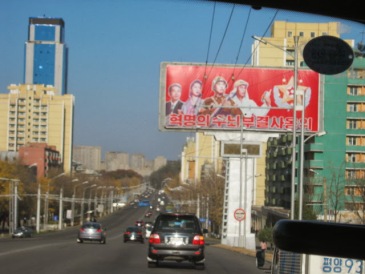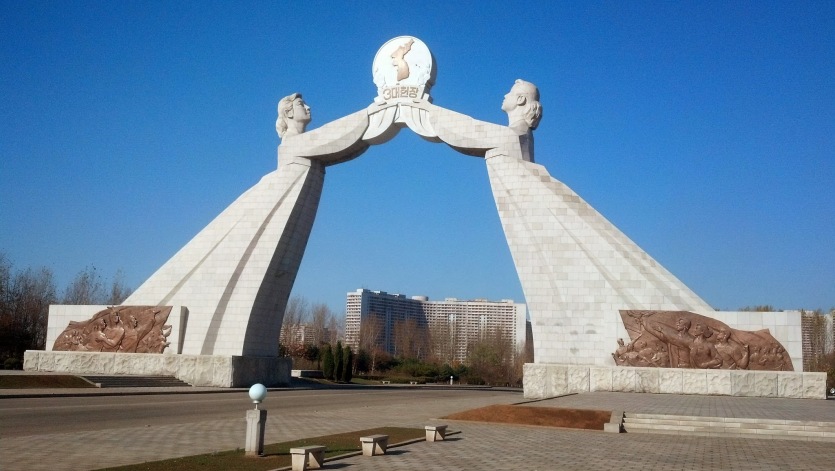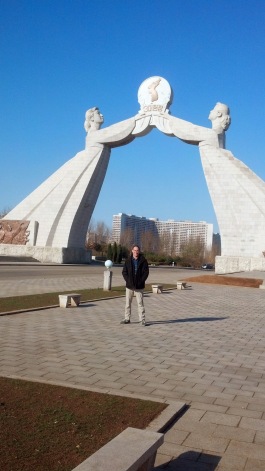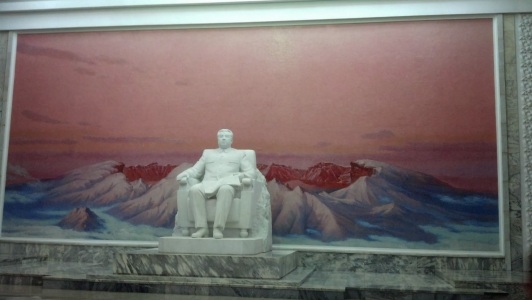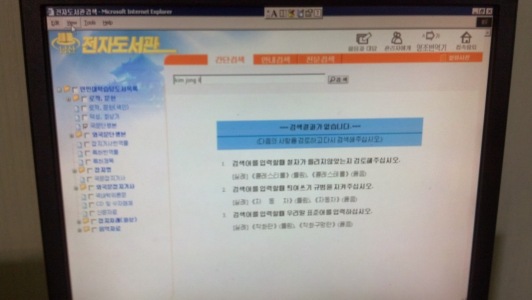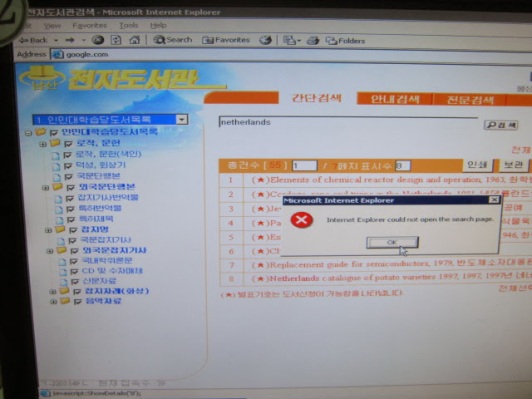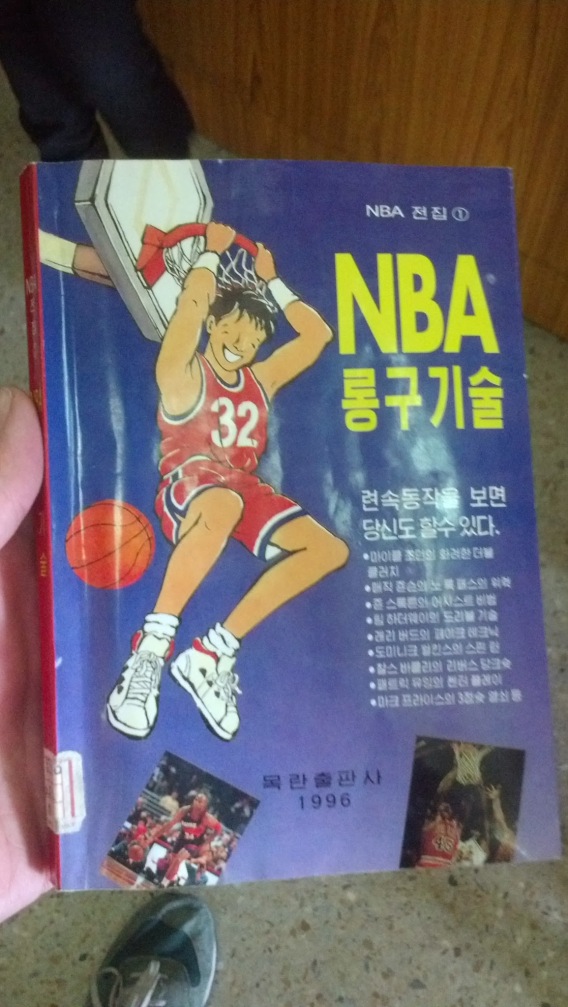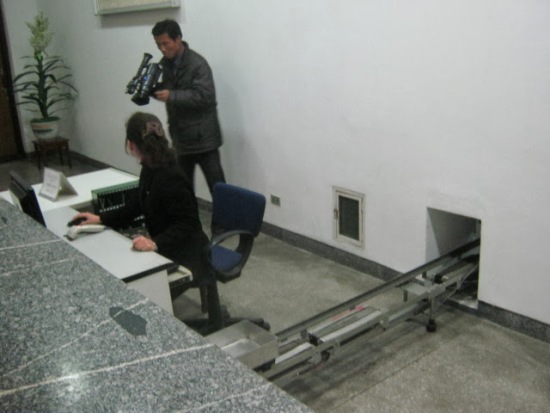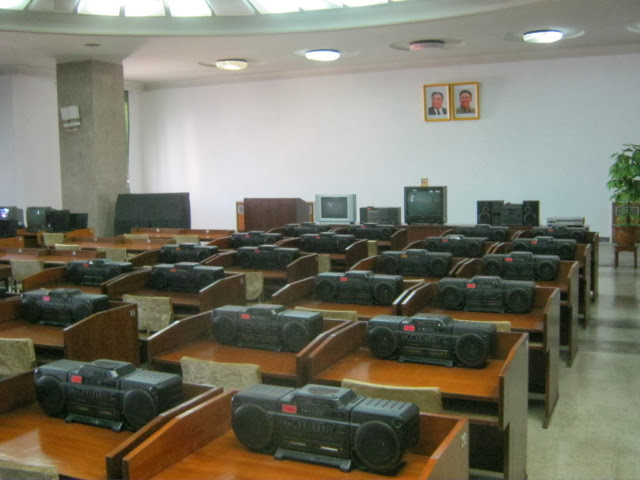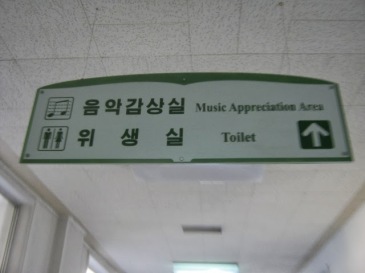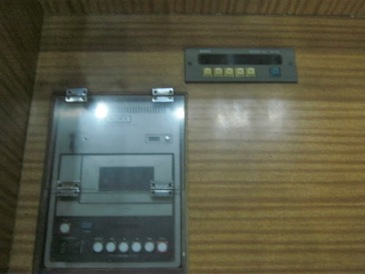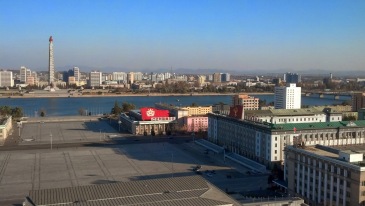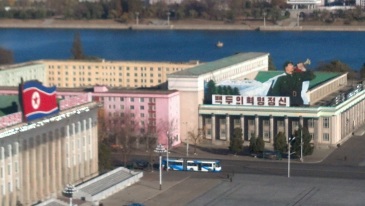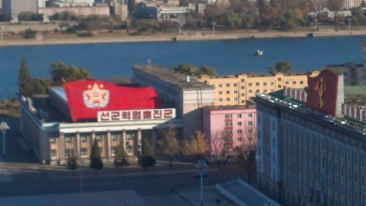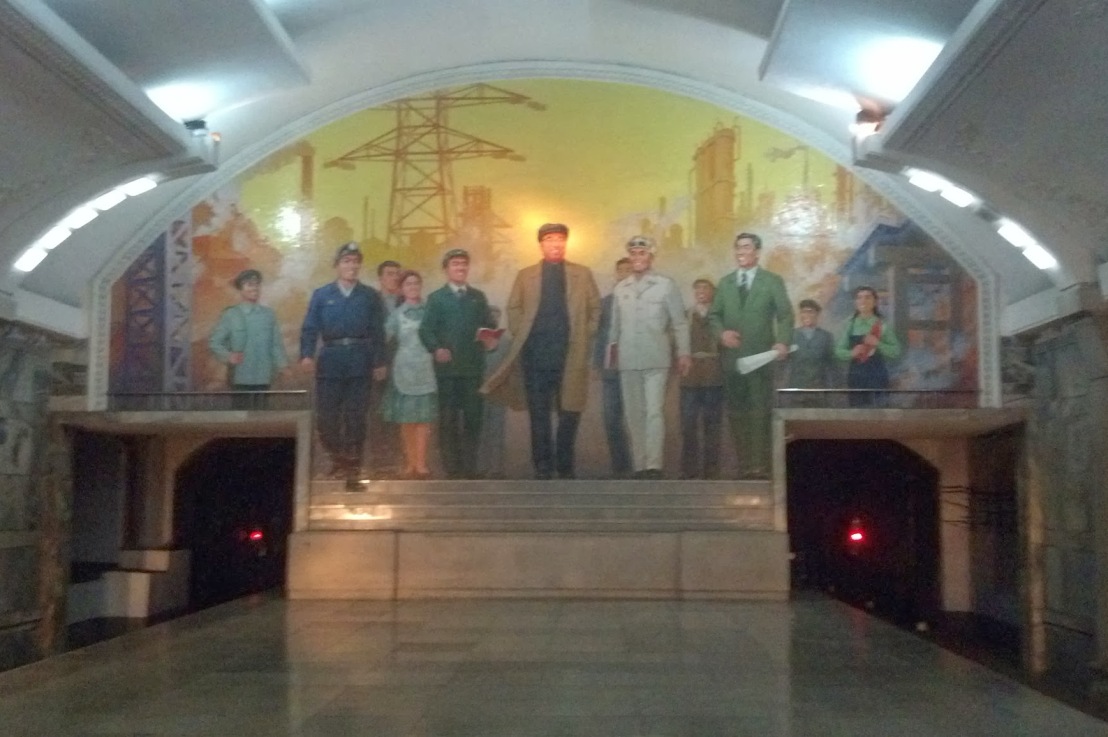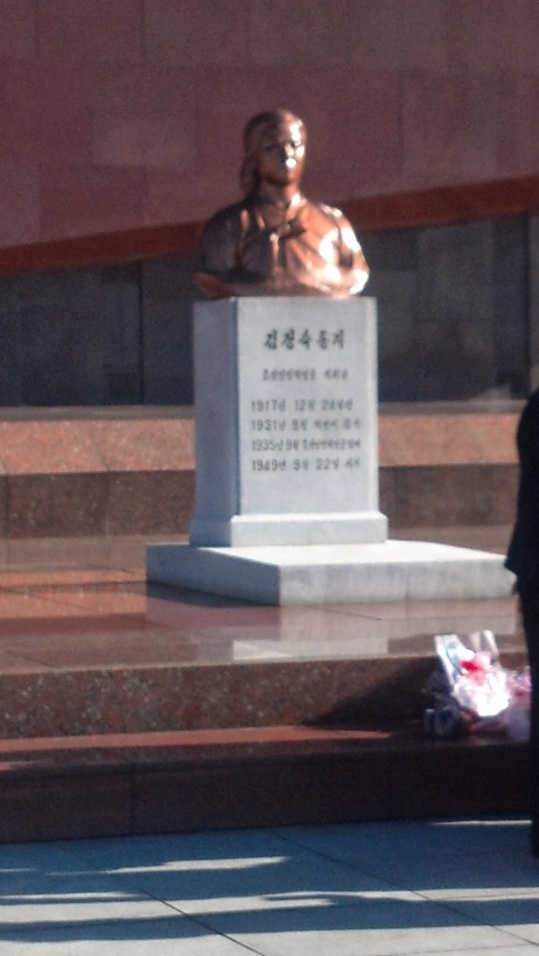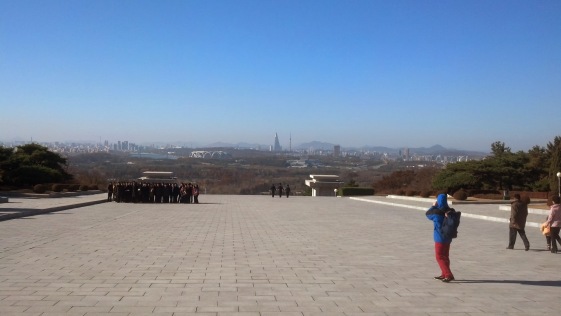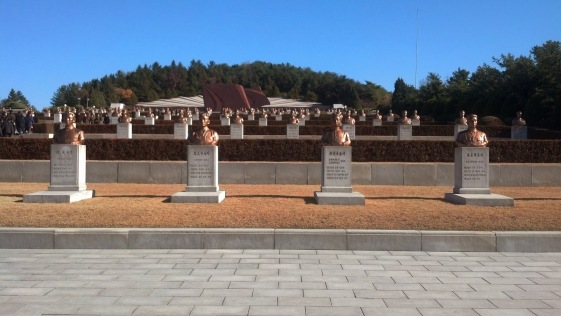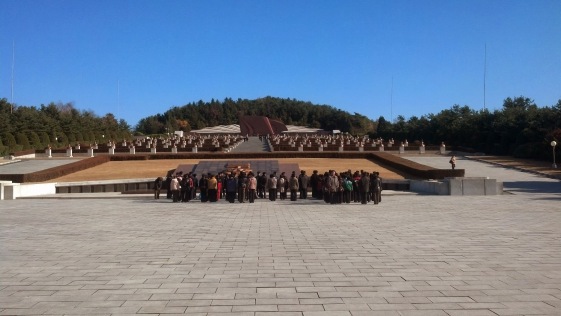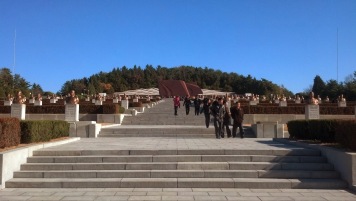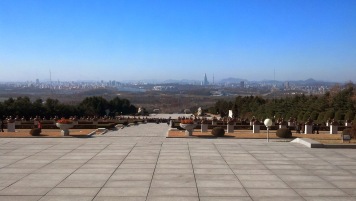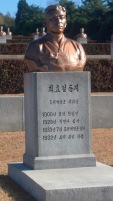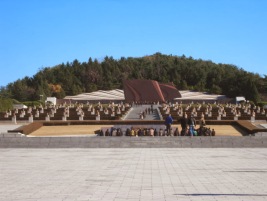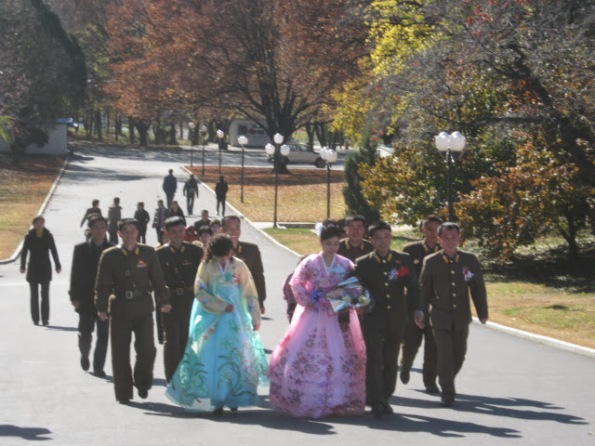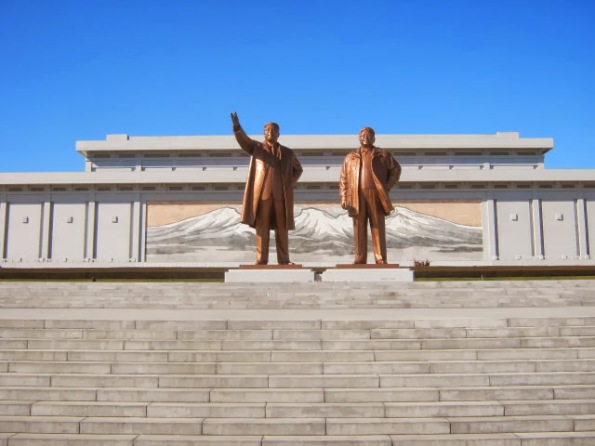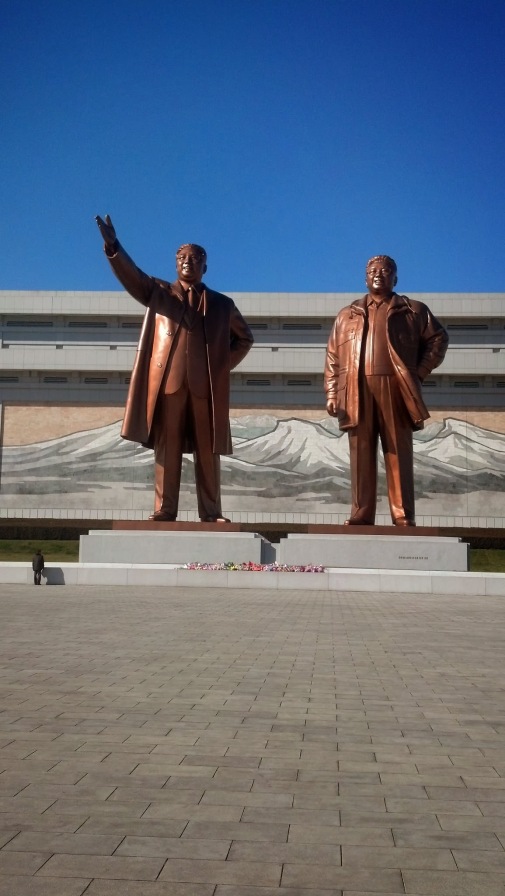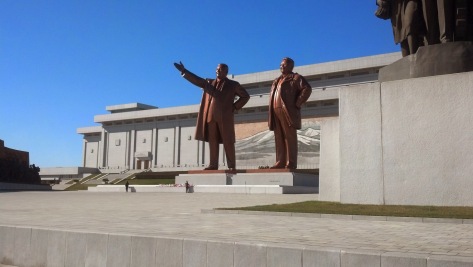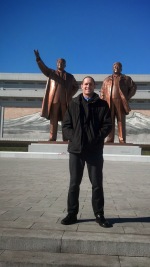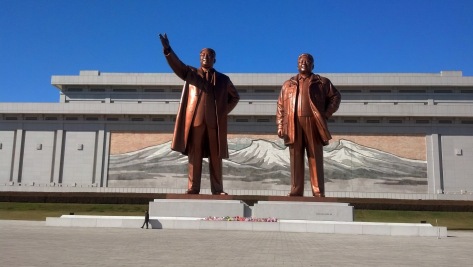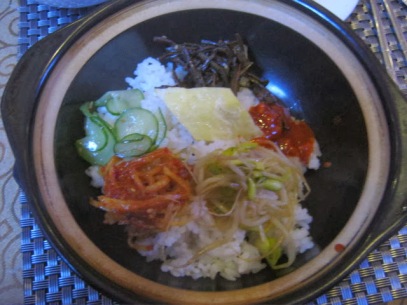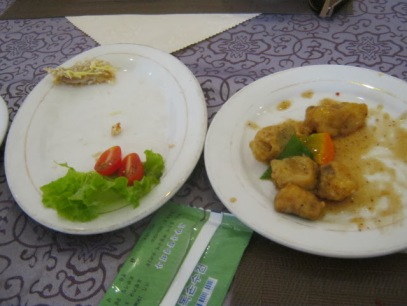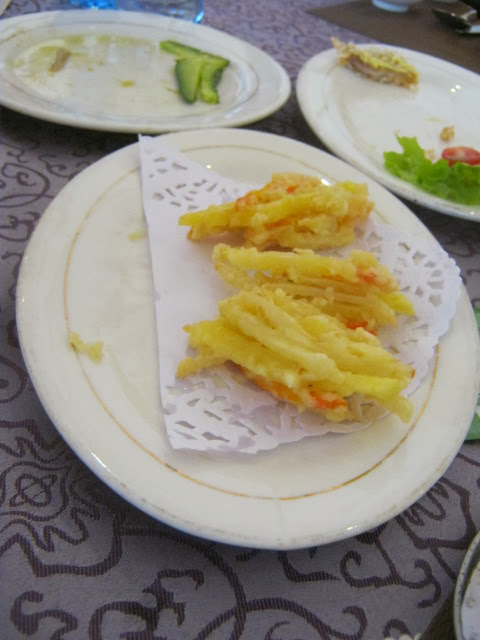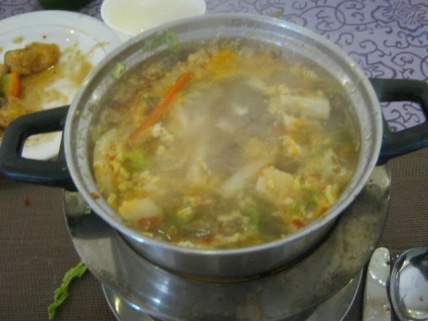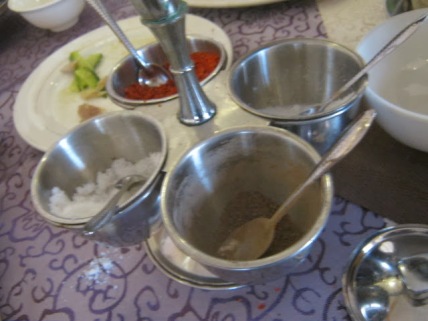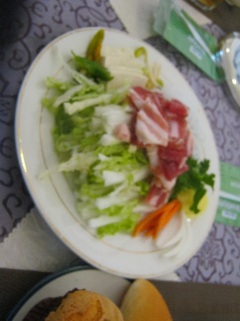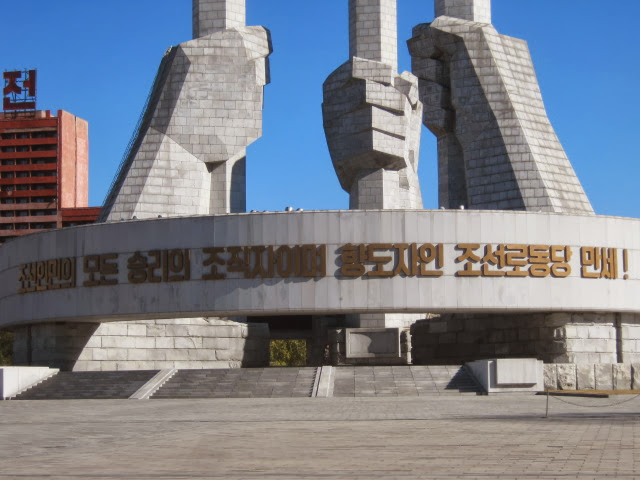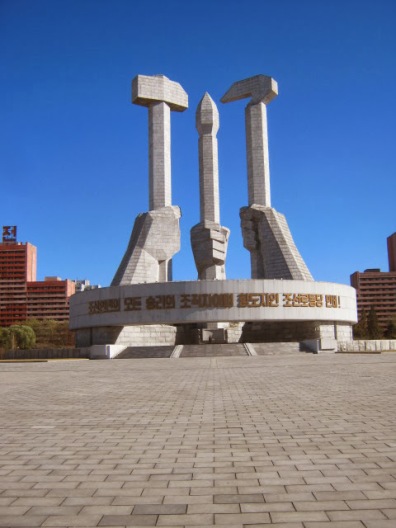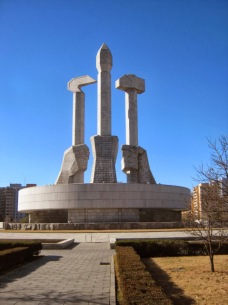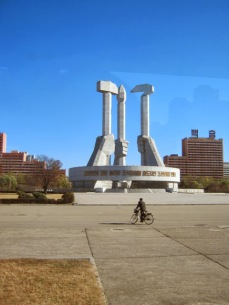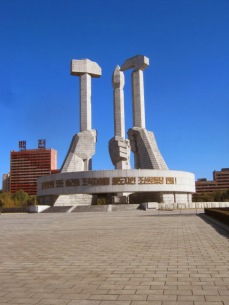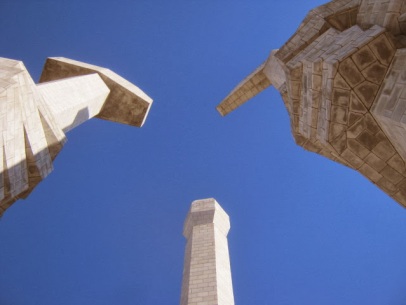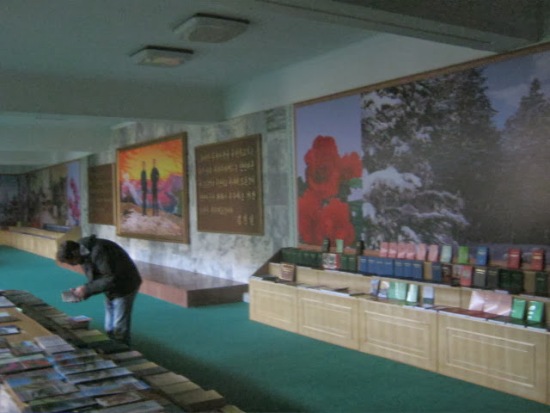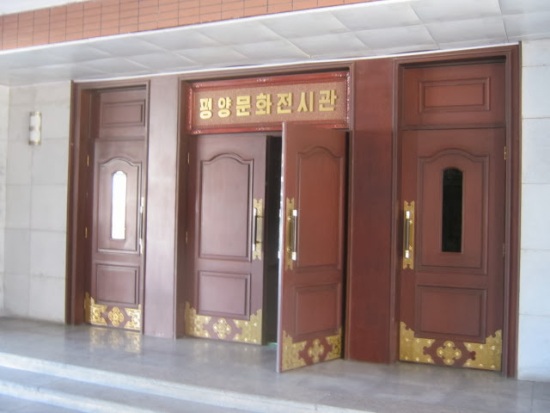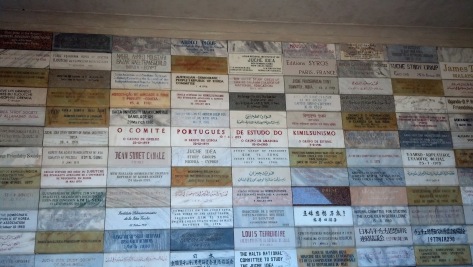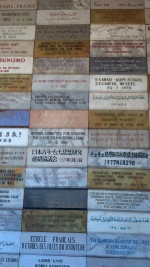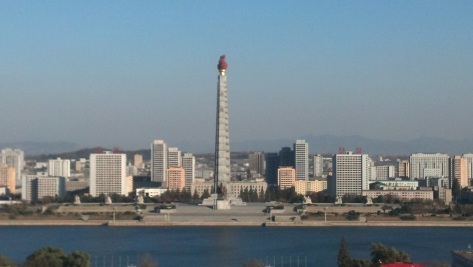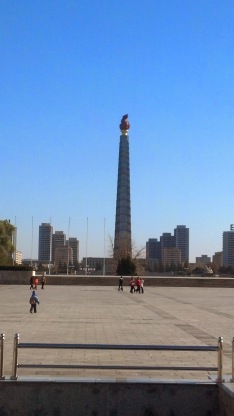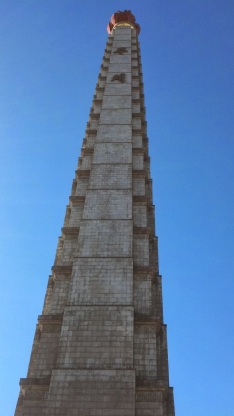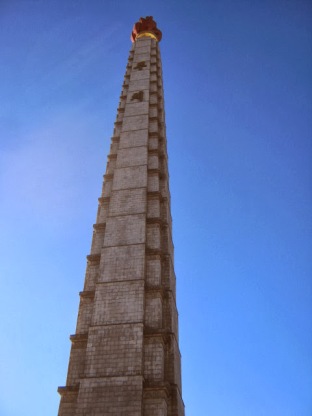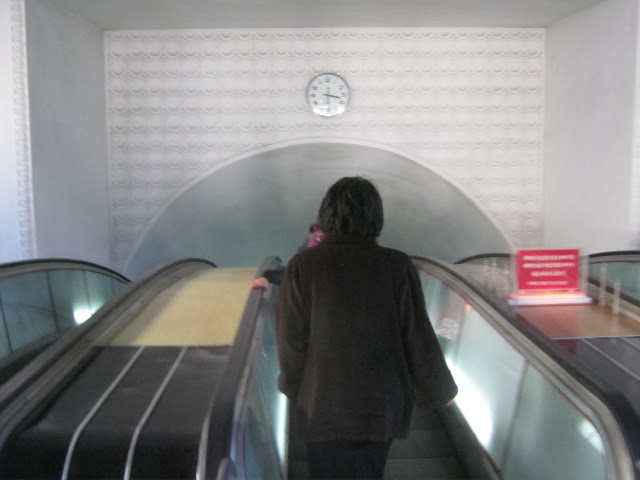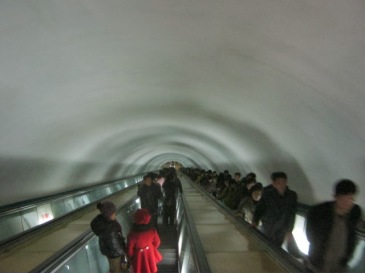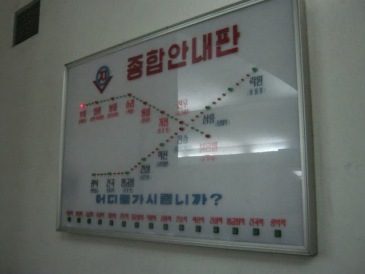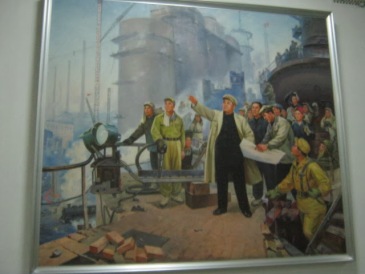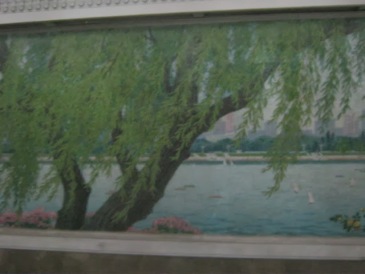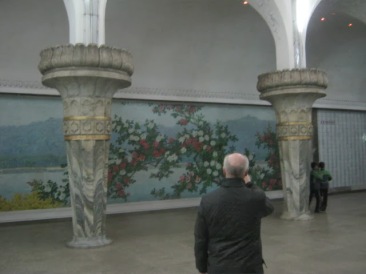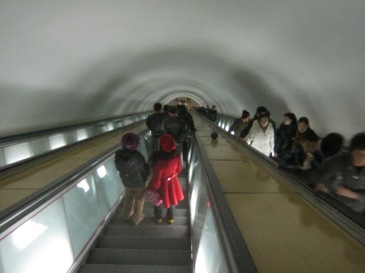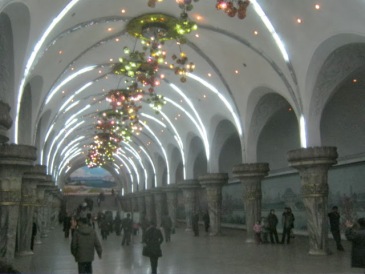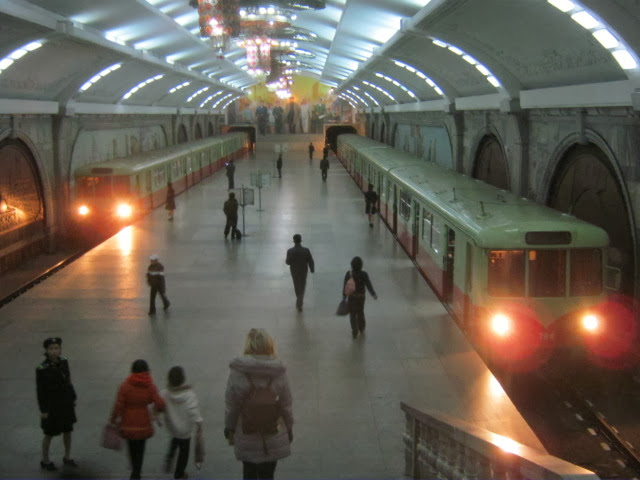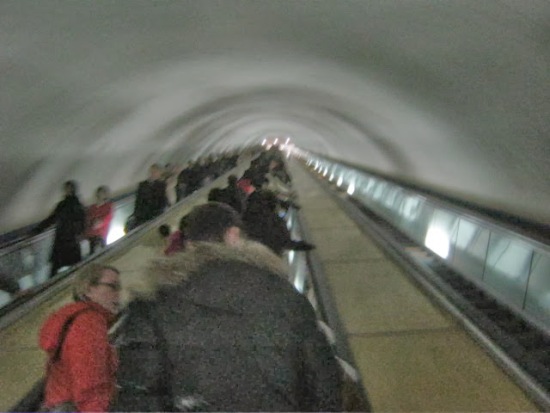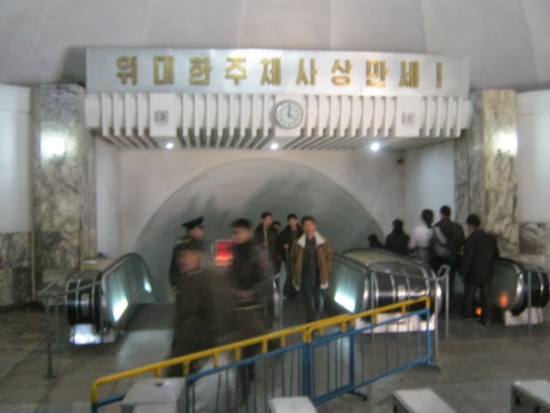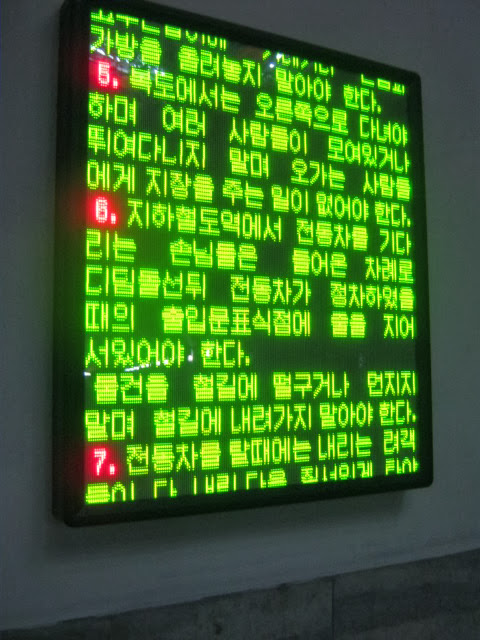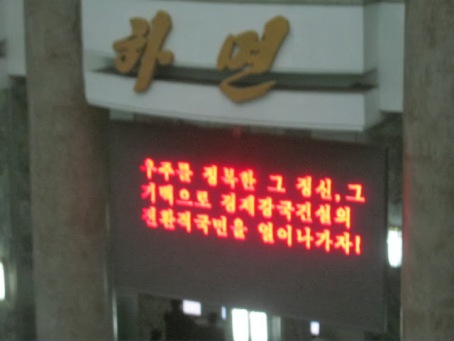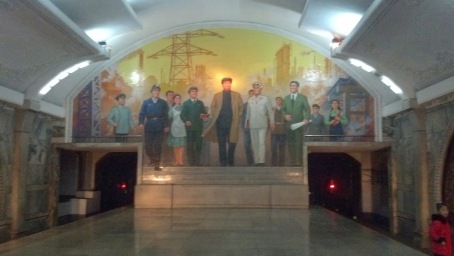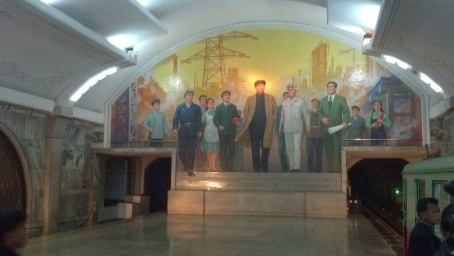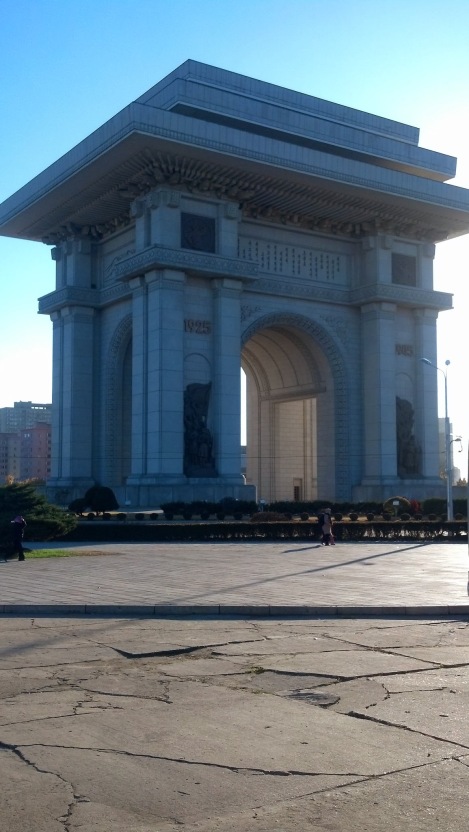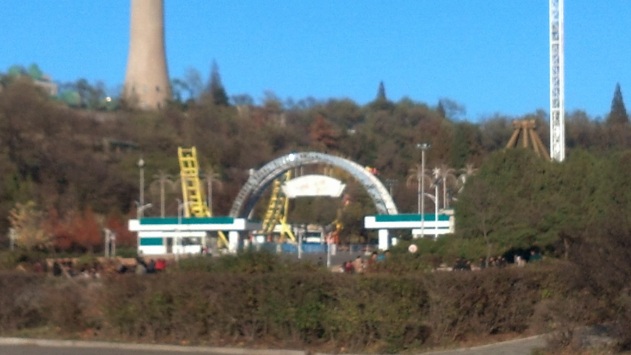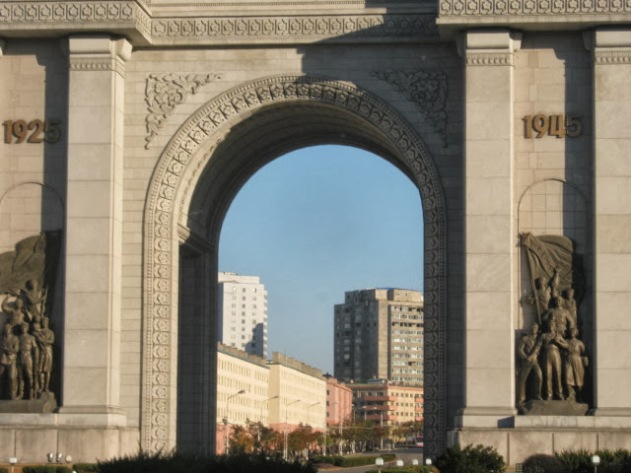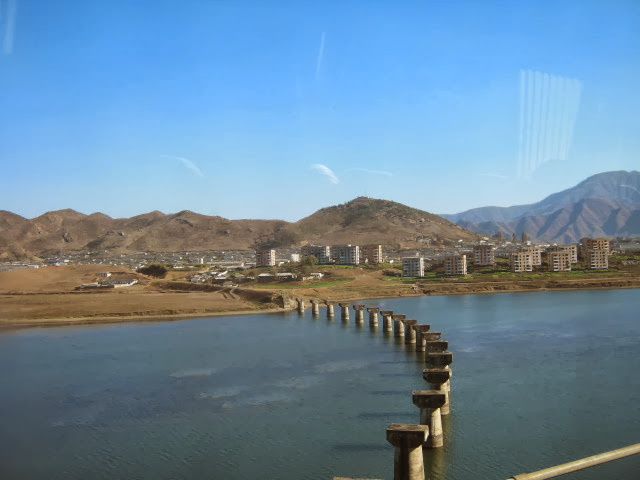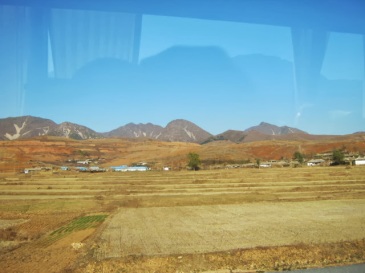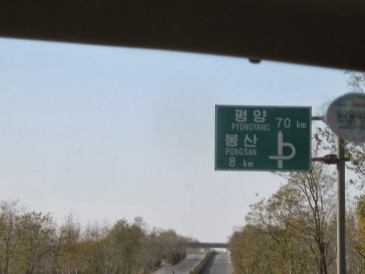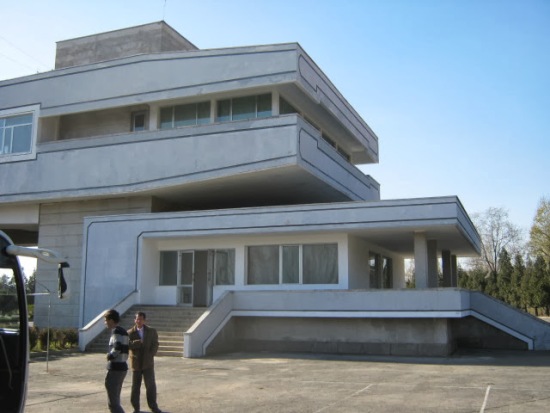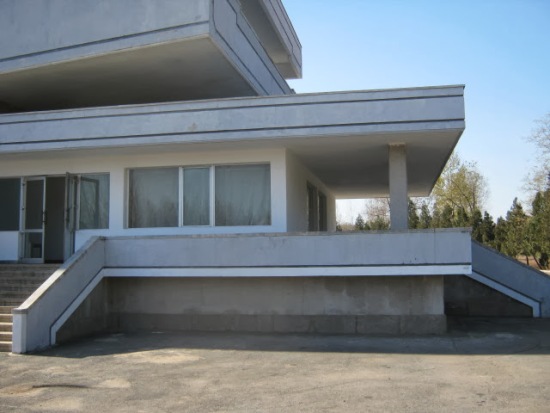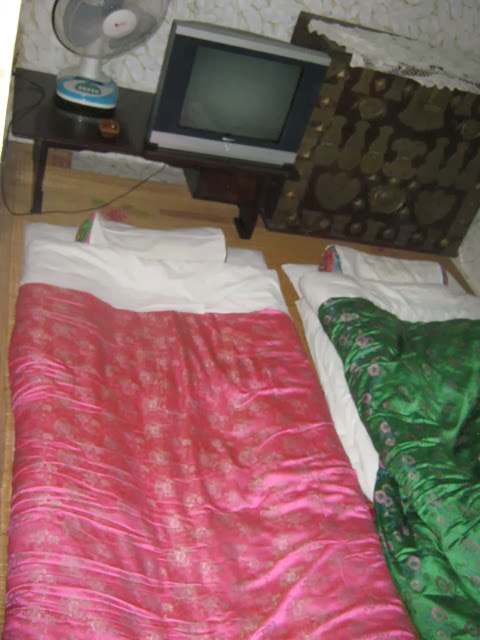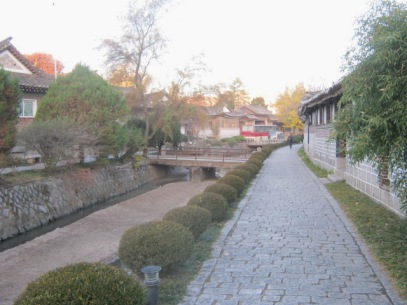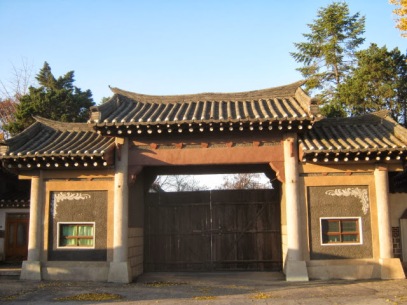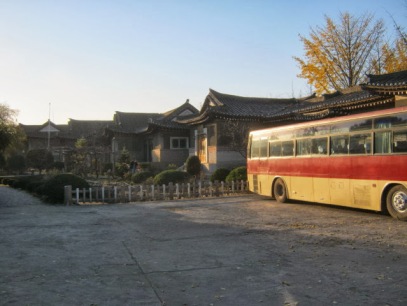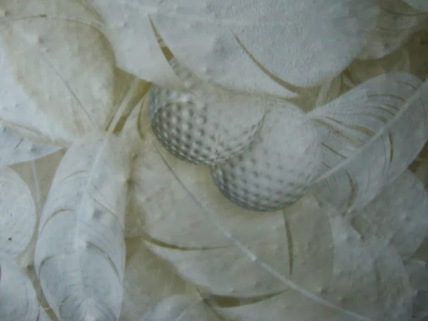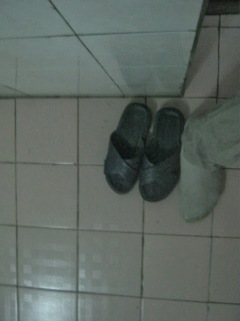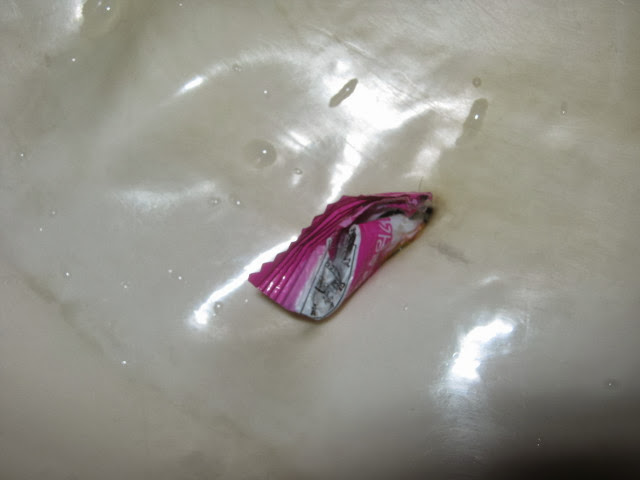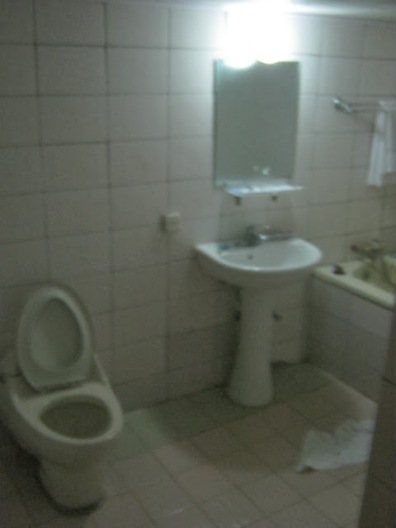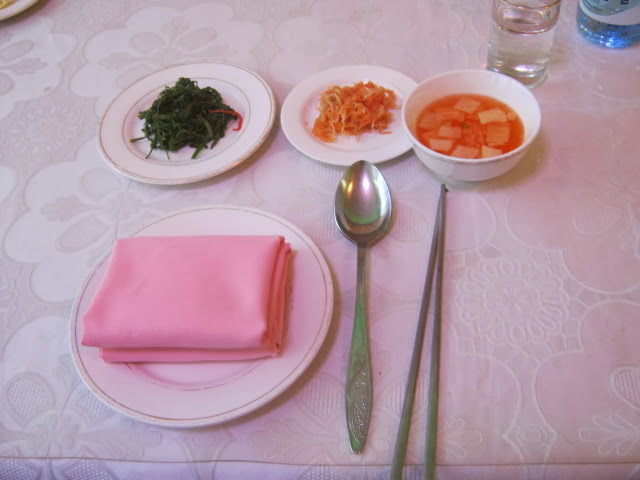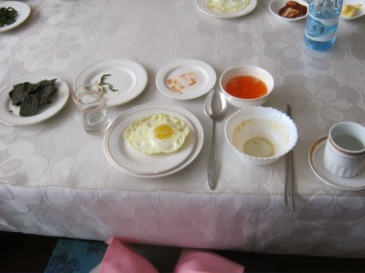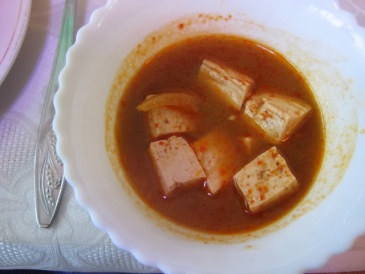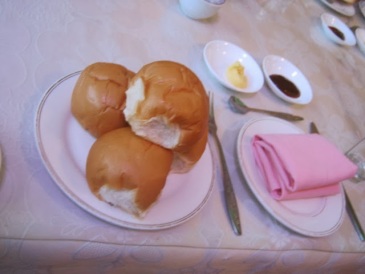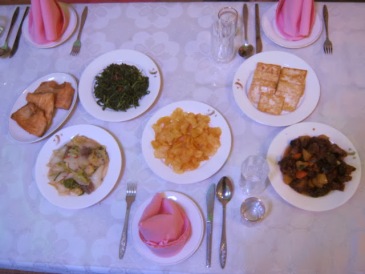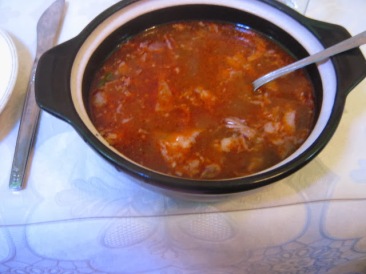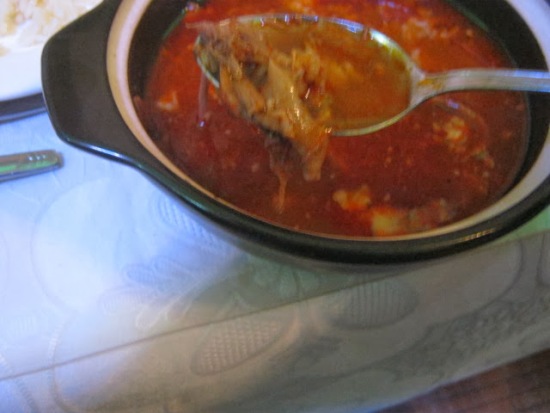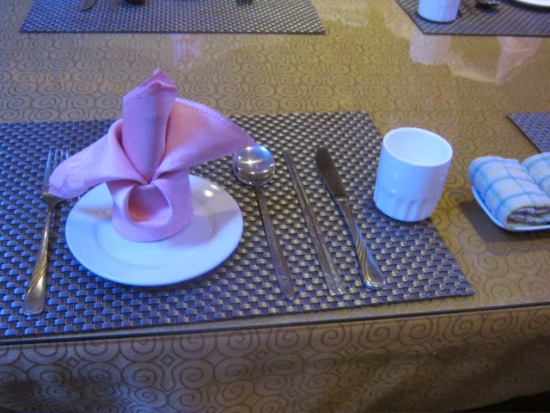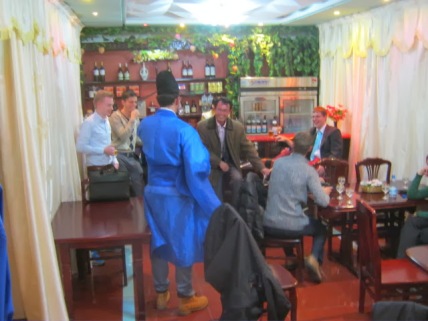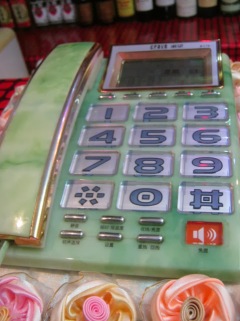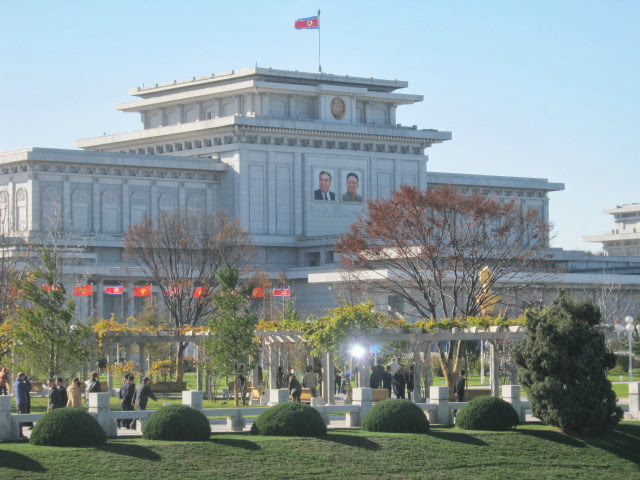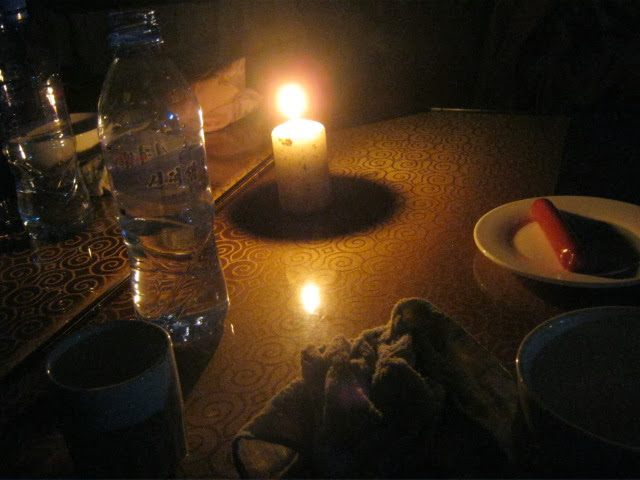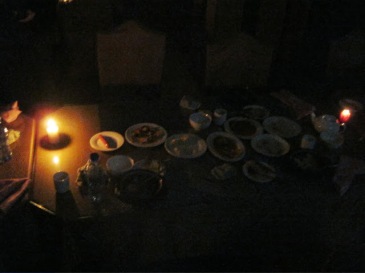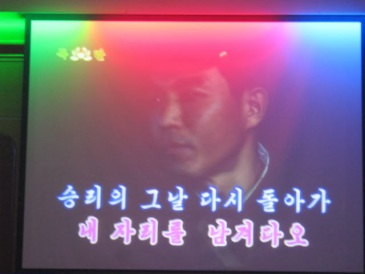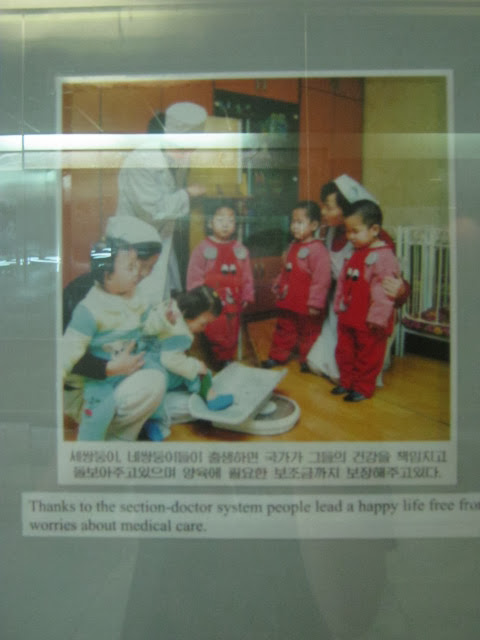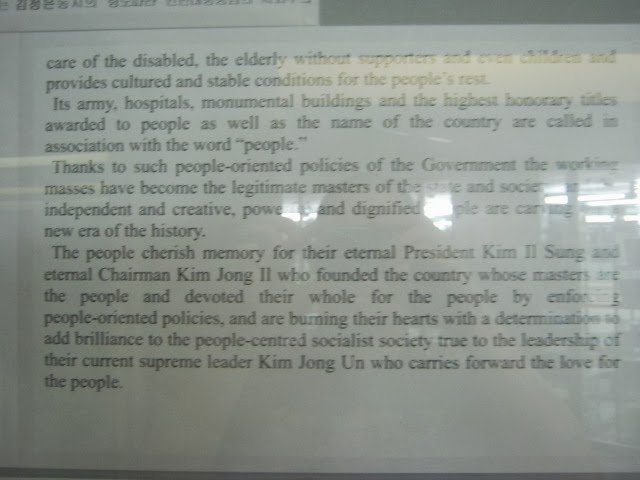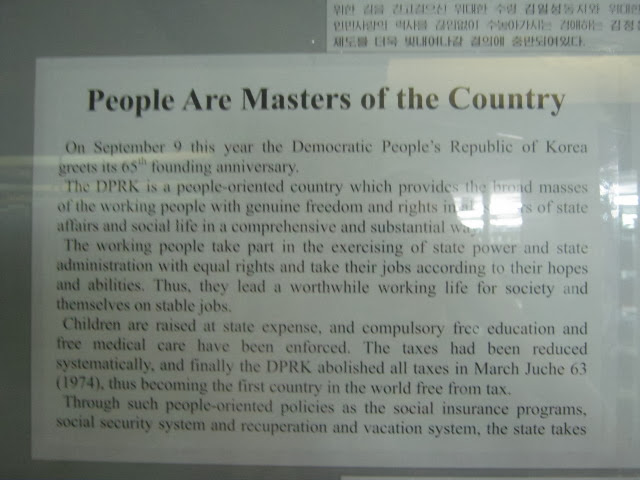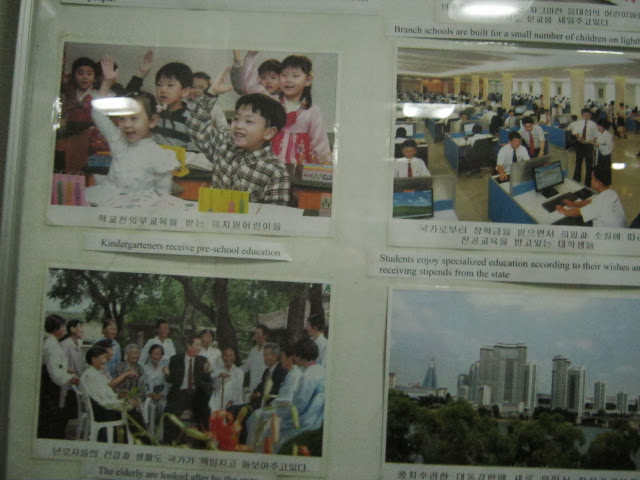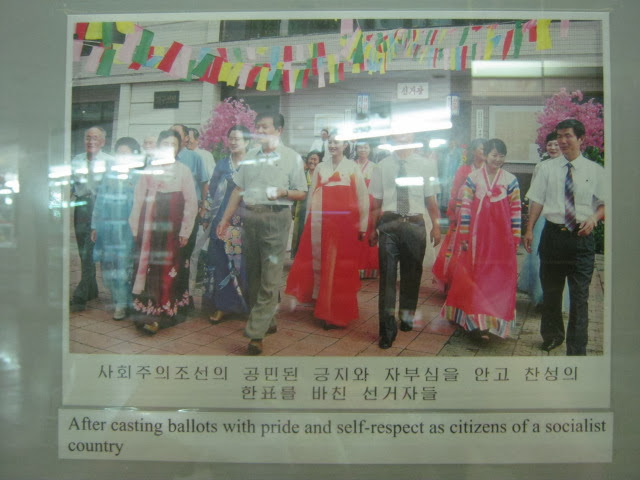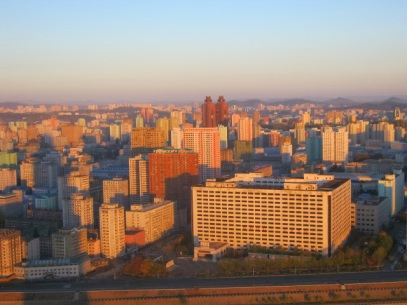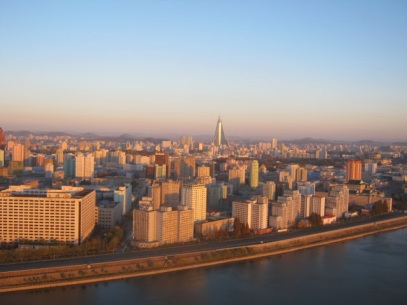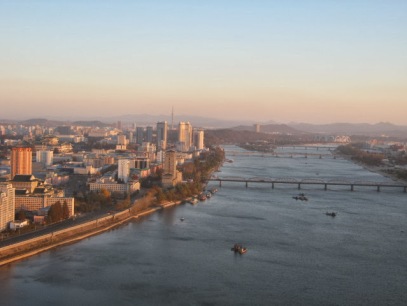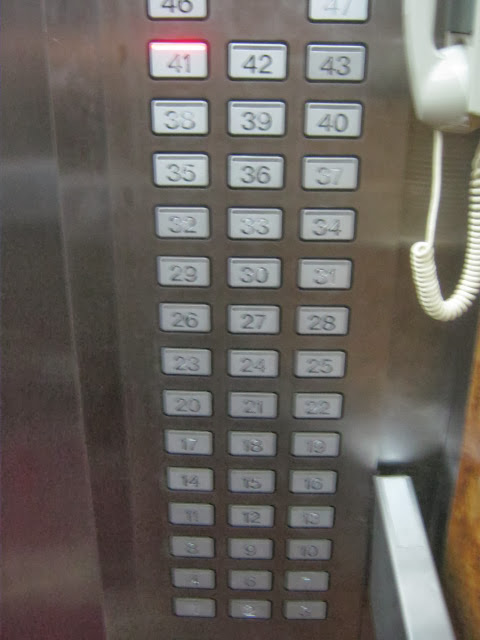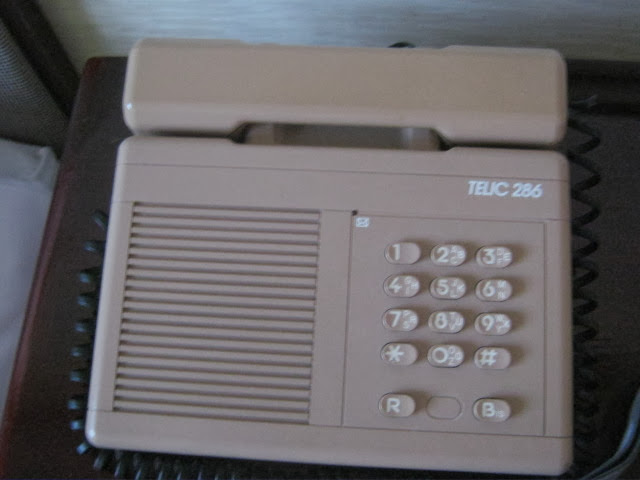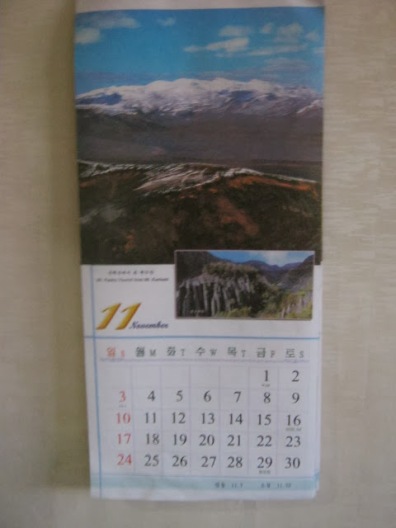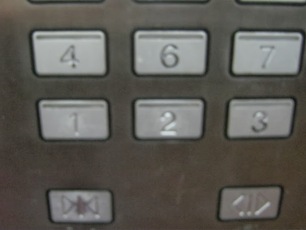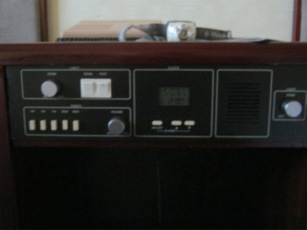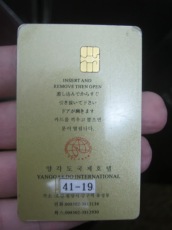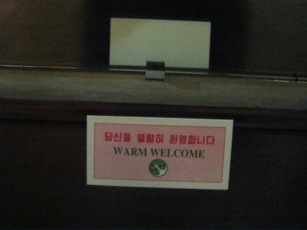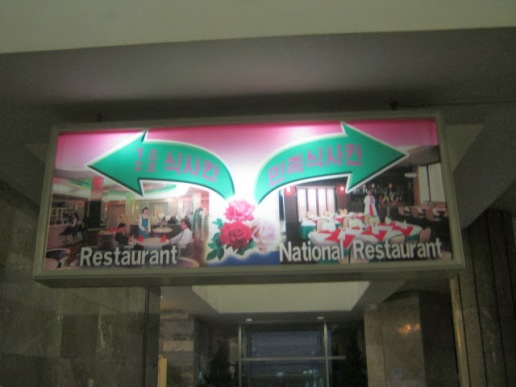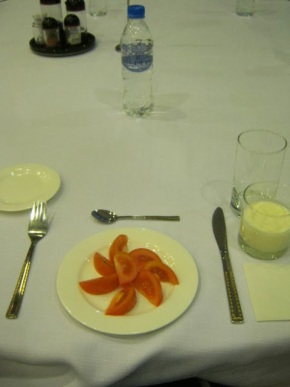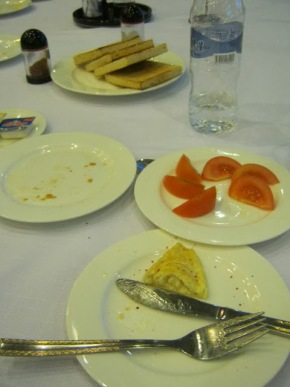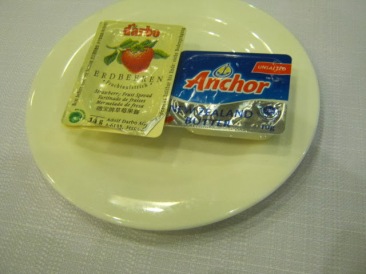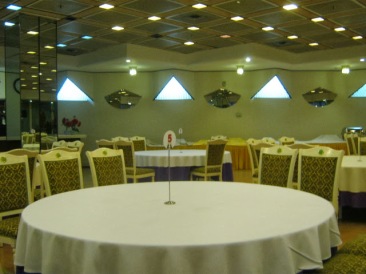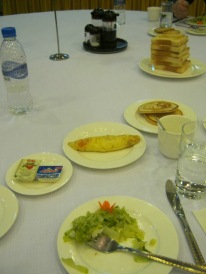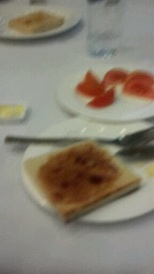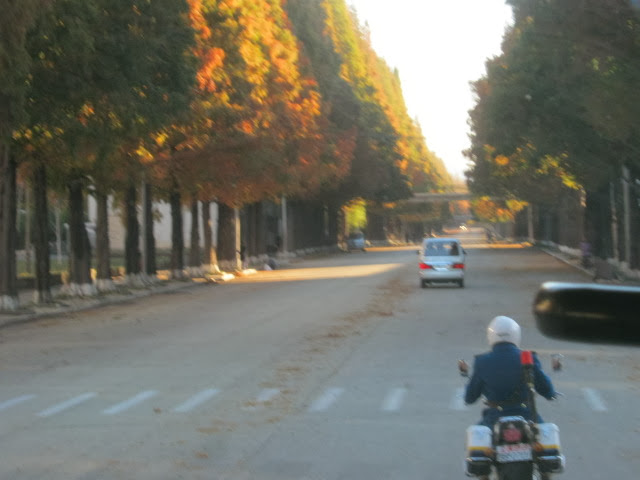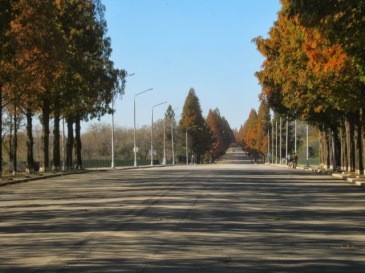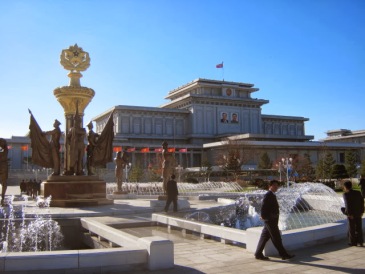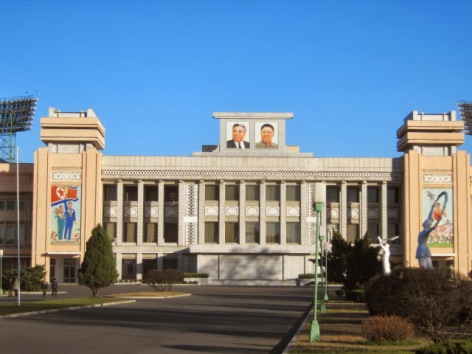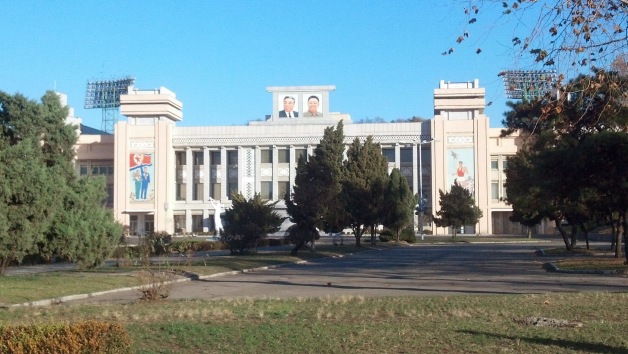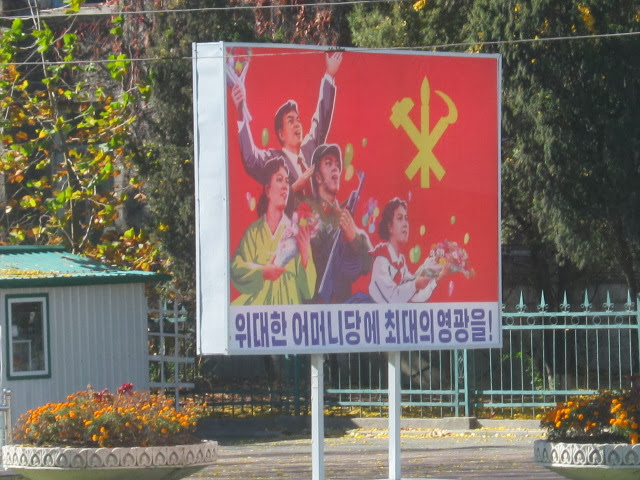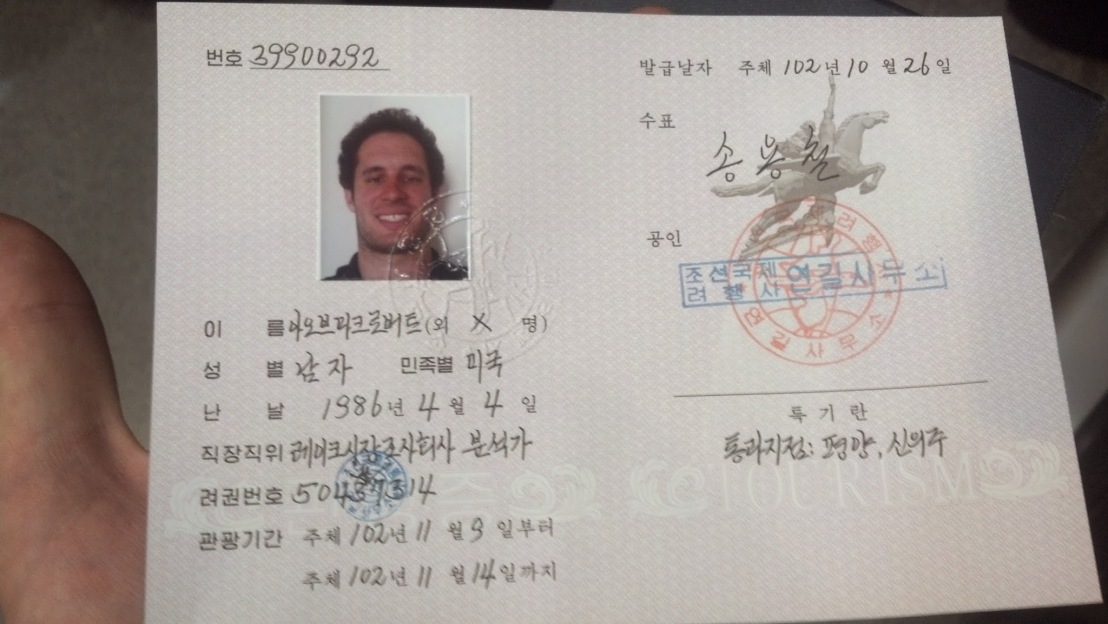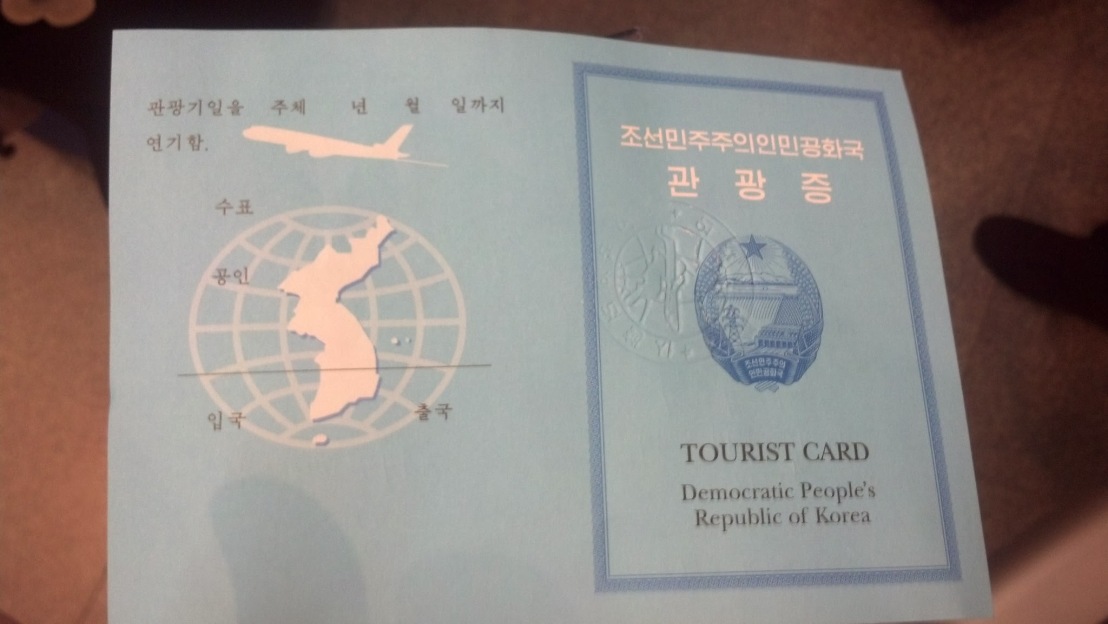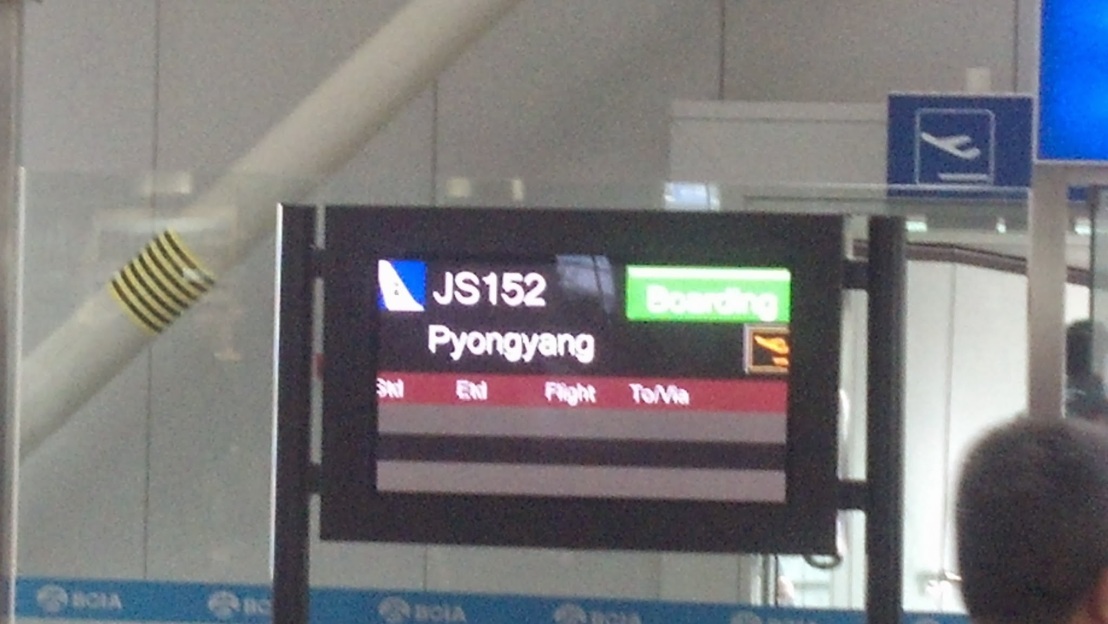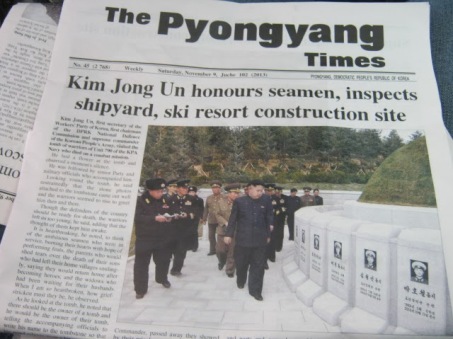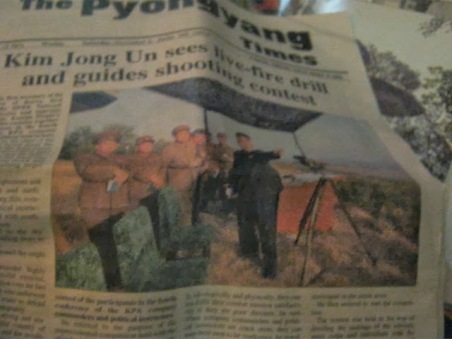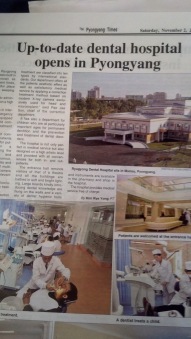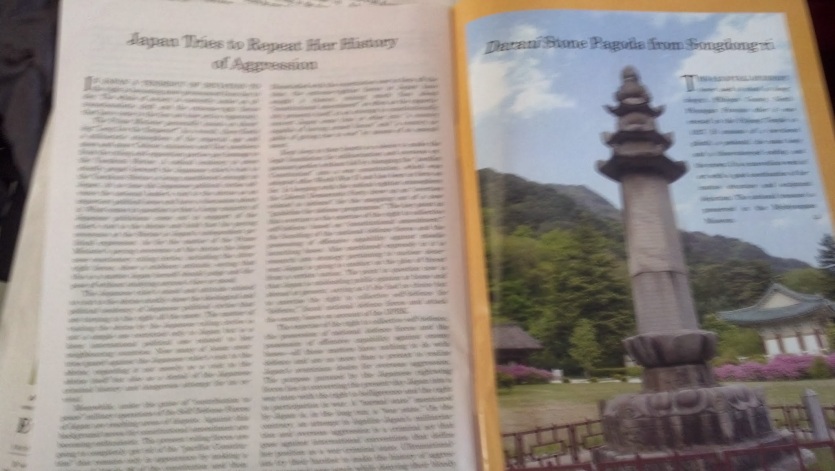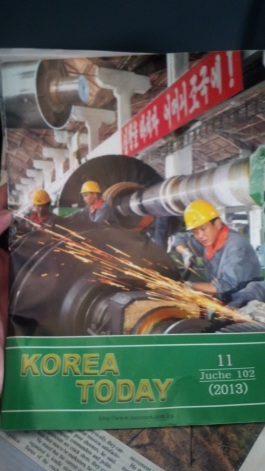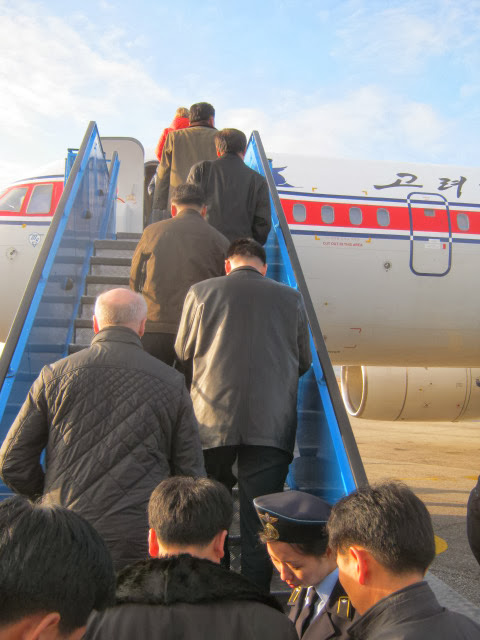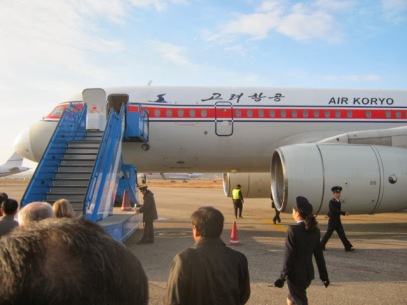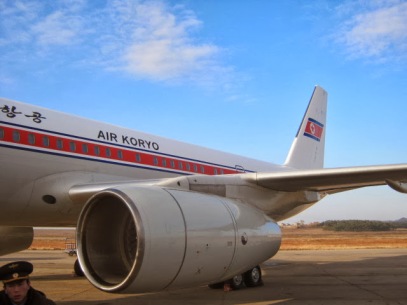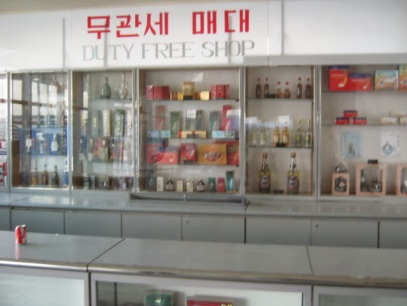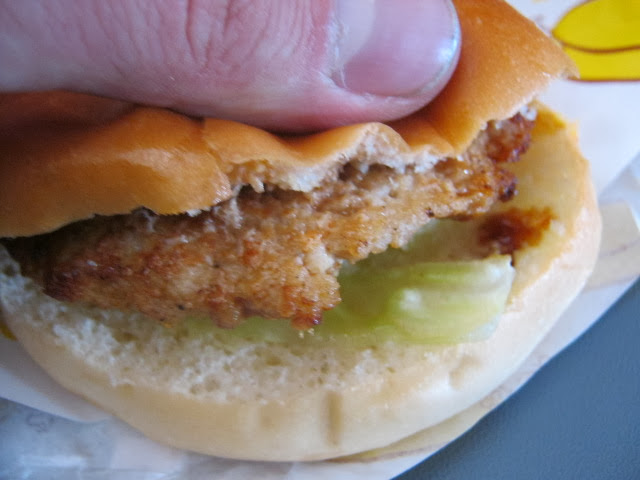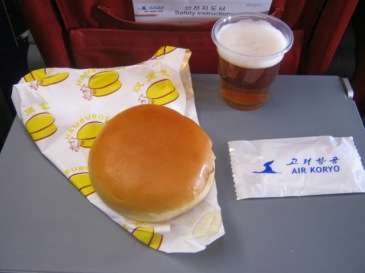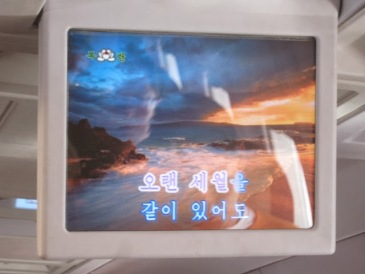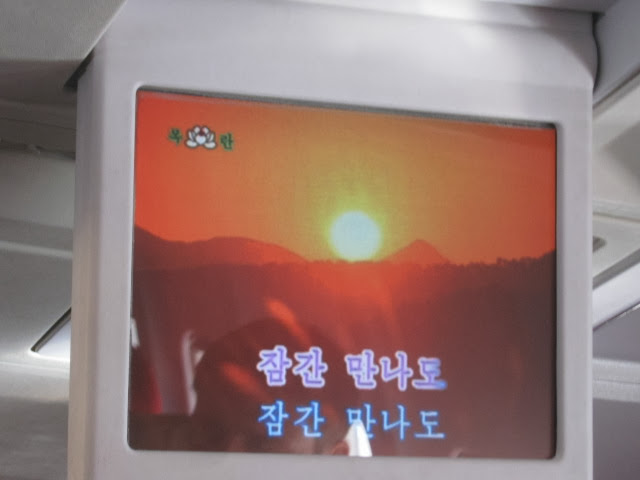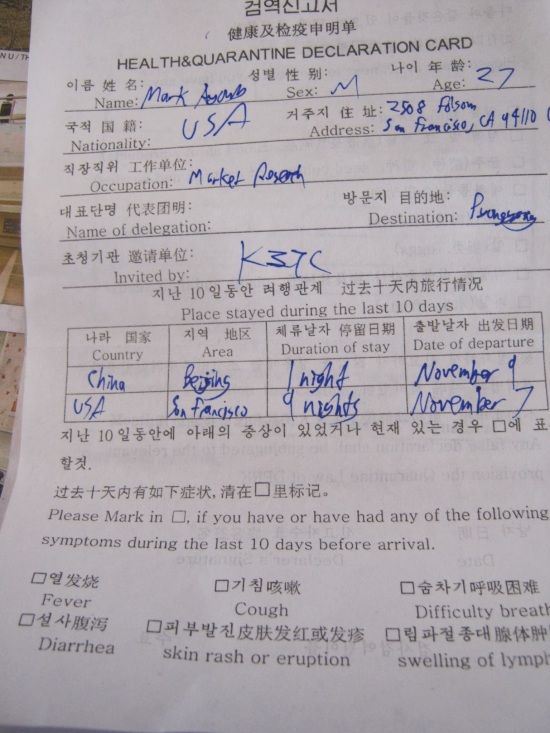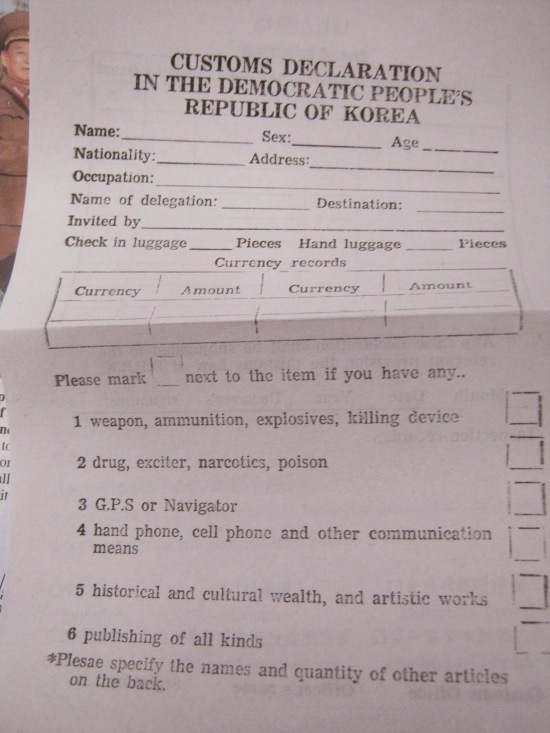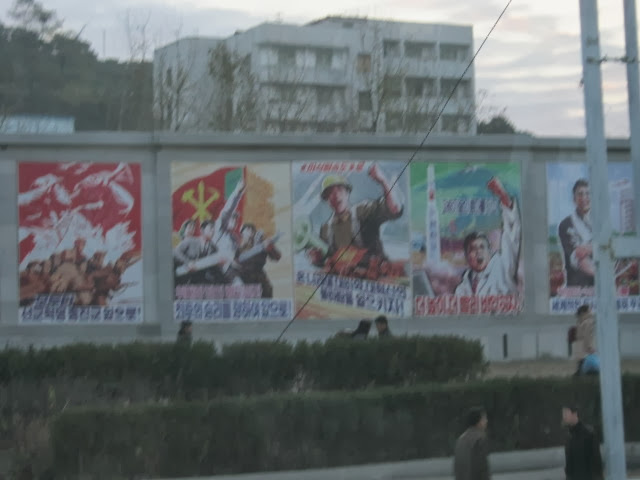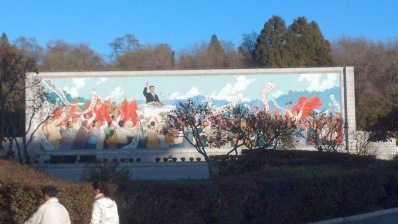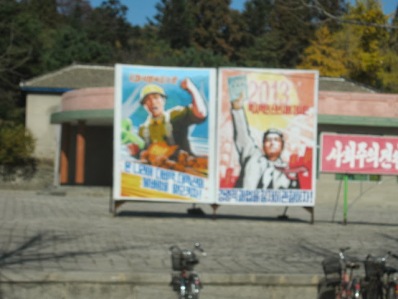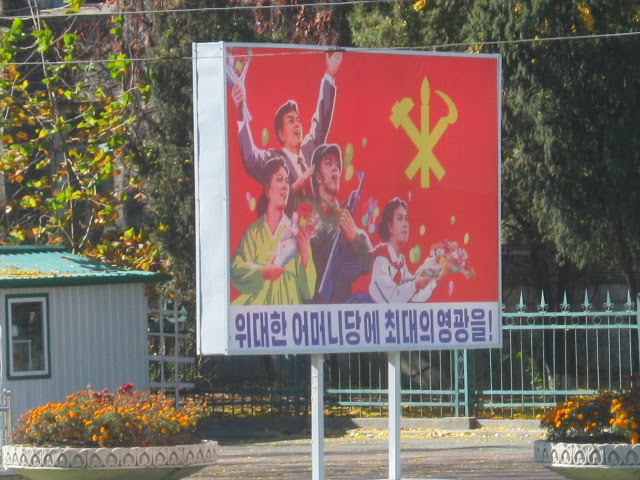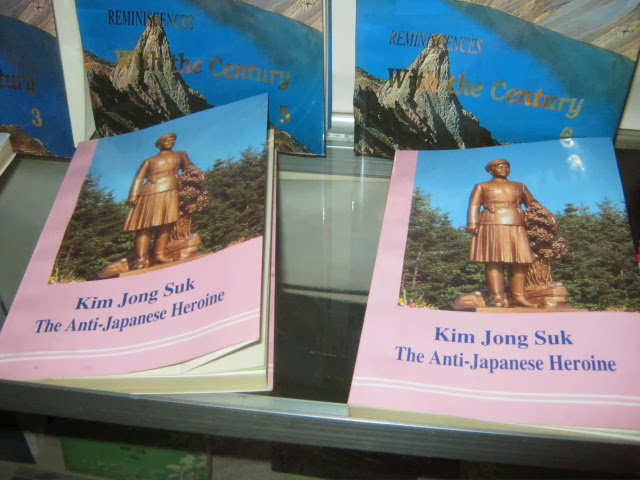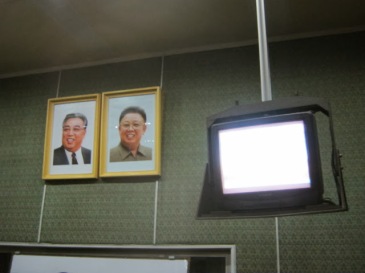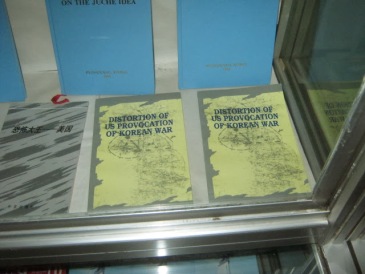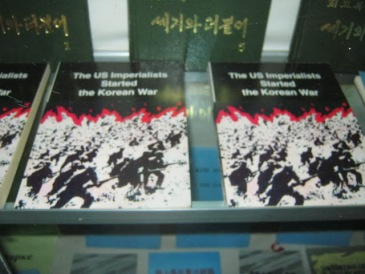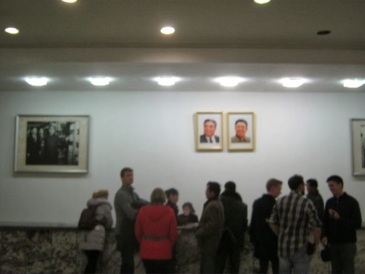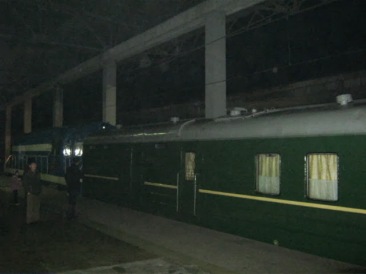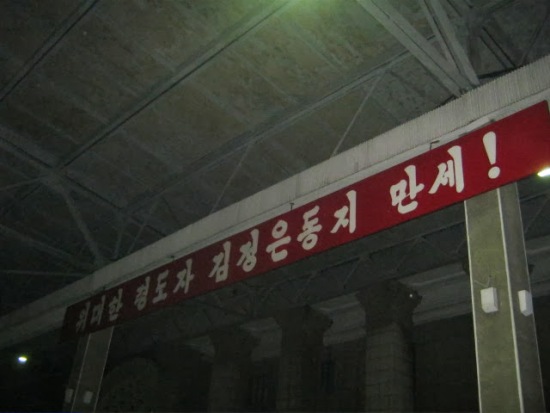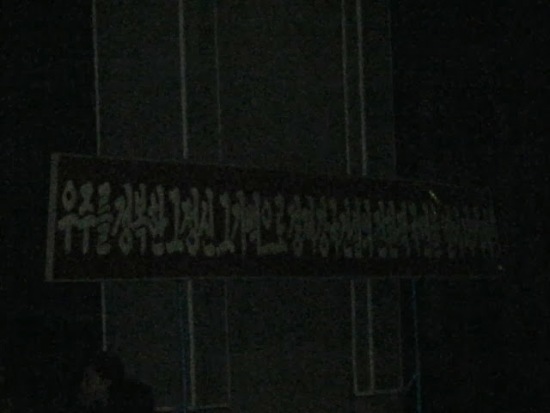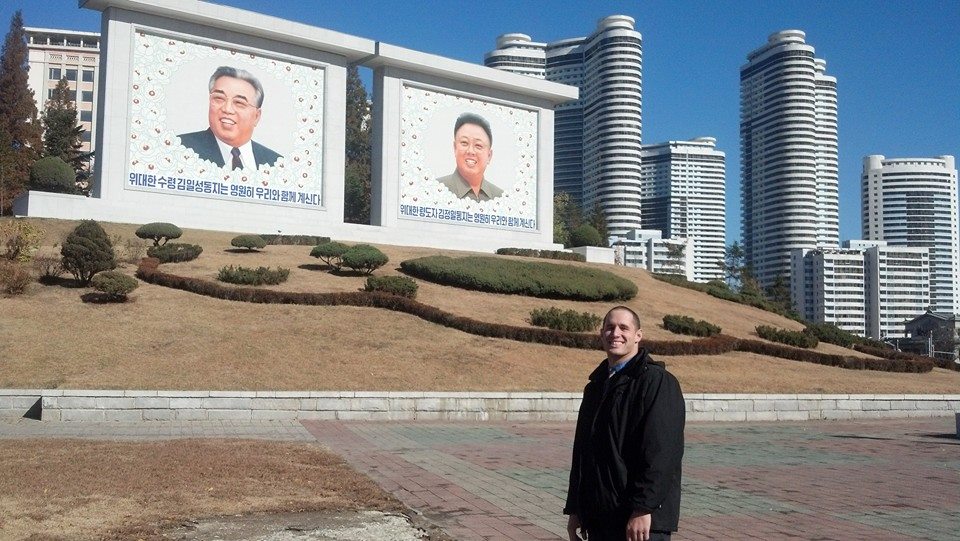This is the fourth part of a multi-part series chronicling my trip to the Democratic People’s Republic of Korea (North Korea). Part 1 can be found here, Part 2 can be found here, Part 3 can be found here and FAQs about the trip can be found here.
Thanks to the heated floor at our hotel, I slept OK. Had it not been there, I probably would have frozen to death, as the sliding wooden doors did not provide much protection from the outside. Knowing that breakfast was at 7:30am,and that hot water came on at 7am, I set my alarm for 6:55am sharp. The bathroom in my room was enormous, about the size of the bedroom. There were some shower slippers that were far too small for me. As I went to the shower, I noticed what looked to be a candy wrapper. I was kind of annoyed, but not too surprised, given the rugged nature of the hotel. As I went down to pull it out, I saw that it was actually plugging some type of slit/hole in the bathtub, and didn’t seem to want to come out. How does one cut a hole in the bathtub? I turned the water on, and as promised, it was hot. I then turned the knob that switched the water flow from coming out of the bathtub faucet to the shower head. Rather than serving its purpose, the knob instead comes right off. So, my shower consisted of me holding my hands under the bathtub faucet and splashing water on myself. Considering that I had no hot water the night before, and no towel the night before that in Beijing, I was starting to get a bit annoyed (and looking forward to showering in America). The wallpaper in my hotel room was a rather random pattern of golf balls and feathers. I kid you not. There was also a part where it was peeling, with looked to be a Korean newspaper underneath.
The night before, we were given the choice of “Korean breakfast” or “Western breakfast.” Our group was split about half and half (I of course opted for the Korean breakfast). It consisted of more kimchi and cold greens (in a good way), as well as some decent soft tofu soup (soondobu), and some seaweed and rice. Western breakfast was a fried egg and four rolls for each person. As I walked outside, it was actually a pretty beautiful setting, with all sorts of leaves and trees changing colors (which I didn’t get to see the night before because it was so dark). There was a small gift store that they encouraged us to hit up before getting on the bus. I bought some North Korean ginseng tea (as we were supposedly in one of the ginseng capitals of the world). It costs $7 USD. I gave the woman a twenty, and she gave me 10 euros back. I was now carrying three different currencies in my wallet (USD, Euros, RMB). We boarded the bus and headed out.
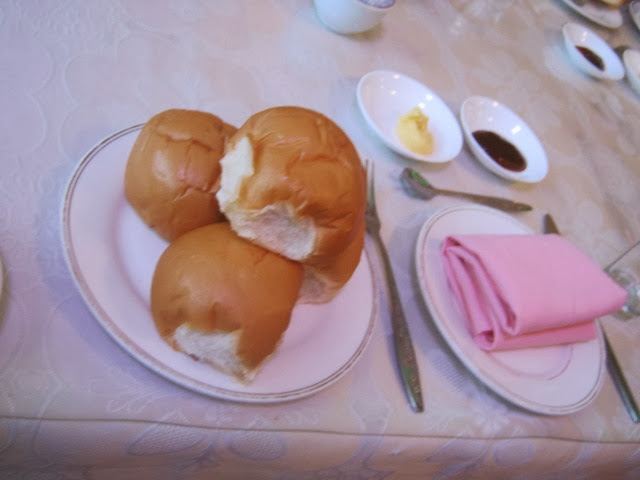
Before we went to the DMZ, they took us to the tomb of King Kongmin. Naturally, none of us spoke up, but we were all a bit disappointed as we had thought the first stop was the DMZ. Of course, we were all too tired to remember if they mentioned this the night before. King Kongmin was a ruler during the Koryo dynasty. I probably should have been listening better to the tour guide, but I wasn’t all that interested, and it was still just past 8am. We took an extremely windy road to get there, and on the way we passed through lots of farmland. Most of the farmland either had lots of cabbage or was flooded, likely due to poor irrigation. At the end, we reached the tomb. There was a pretty steep staircase that we walked up, and at the top, we see two round tombs. There were a fair amount of other pretty cool-looking statues around “guarding the tomb.” We were up pretty high, and we had a nice view of the mountains (fun fact that they told us: North Korea is 80% mountains, which is why it makes farming so difficult (though the government has not helped this). There was quite a lot of beautiful foliage. Just to be sure that it was real, I pulled a few leaves off, and they were indeed real leaves. Definitely a relief.
DMZ
Finally, we got back onto the bus, and headed toward the DMZ. As we started to get closer, our tour guide pointed out a sign for Seoul indicating how many kilometers away it was (as if the road went right on through). As I mentioned, they’re REALLY big on the reunification thing. We saw a few other reunification-themed propaganda signs too.
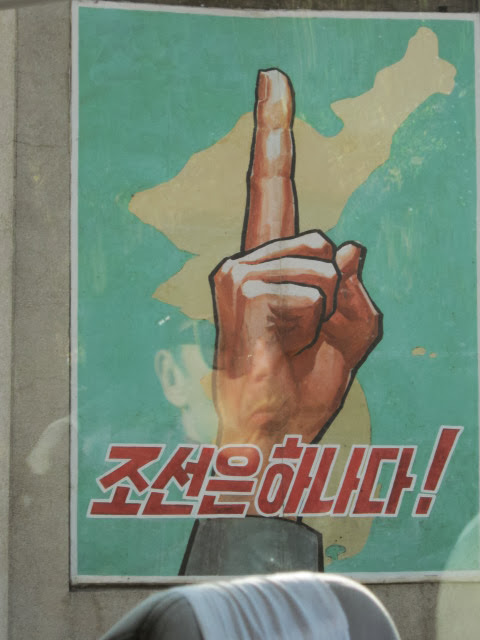
We pulled into a gift shop right before the official entrance into the DMZ. There were a few propaganda billboards with messages along the lines of “One Korea” and “A Korea for the future of the children”. It looked like we caught the gift shop slightly off guard, as most of the staff was in plain clothes when we walked in, but they soon changed into elaborate pink dresses. The gift shop was mostly kitschy overpriced pro-DPRK stuff, which I didn’t have much of an interest in. We were also told that we are waiting for another tour group, and then from that point, we will be accompanied by soldiers the rest of the way. First, we went into another room, where we saw some maps. A soldier briefly explained the map (in Korean, with our guide translating). This was the first of many things I heard from the soldier about their version of the Korean War, but the buzzwords were mostly similar, “the tragedy of the war,” “US imperialists,” “defeat of the US,” “hope of reunification,” etc. We were also told that this is the one time we can take pictures of the military.
The soldiers then got on board, and we headed in. Surprisingly, they were fine with us taking pictures. We began the drive into the DMZ with three armed soldiers at the front of the bus, as they require. Throughout the trip, I’ve sat in the second row on the right in the front of the bus, mostly so I can see everything ahead of me through the windshield. One of the soldiers sits next to me and starts “talking” to me (in reality, he’s looking right at me while speaking, but he’s speaking Korean, so our guide is continuously translating).
He started asking me some general questions; where I’m from, and so on. His eyes lit up when I was American. He asked me what I thought of American foreign policy, and I told him (with my guide translating), that I was worried, and kind of saying in a joking tone, “I never know whom we’re going to attack next!”, referencing our recent near-war with Syria. He then asked me, “So if the DPRK were to be the next target of the US, whose side would you be on?” I was about to ride into the DMZ with three armed North Korean soldiers, and I was getting asked about my political allegiances. Thinking fast, I reply, “I don’t want to even think about that.” I think this was the best possible answer I could have given. He also asked me about Obama, to which I replied that he was better than Bush, but that I still was not a fan (in real life, I am). Continuously throughout the trip, both the guides and soldiers seemed to imply that they think the US was very much on the verge of declaring war on North Korea, which of course was not actually the case) but given how much anti-US propaganda was in the newspapers every day, I could see why. The soldier also asks me how the weather was in America, and I replied that it’s not too cold in California, but that it was pretty cold in New York. (North Koreans didn’t seem to have any concept of America beyond Washington DC, New York, and Los Angeles. But as I thought about it, excluding countries which I’d already been to, I didn’t know of many countries in which I could name three cities or more). The soldier then joked about how it was funny that so many US soldiers died in the Korean War because they couldn’t handle the cold . I was obviously horrified that he was laughing at this (not to mention the questionable validity of the statement), but I remembered my surroundings, and nervously laughed with him. I reminded myself that I was the only American on this trip, and I was in some ways an ambassador, and that it was my job to show them that not all Americans are die-hard military hawks like Bush, and that many of us are just regular, normal, thoughtful people. On top of that, all it might take is one stupid statement or action from an American in North Korea to make their government close down the country again to Americans. The soldiers were also wearing those huge funny Russian-style military hats.
Finally, we arrived at the famous blue houses. Across the other side, we could see what looked like a heavily armed building, with the occasional glimpse of South Korean soldiers patrolling it. We could see the North Korean flag pretty closely; further away in the distance to the other side was the iconic South Korean flag (easily one of my favorite flags of any country). There are North Korean soldiers patrolling on our side, but as the guides explained, they were only there to protect us. We then listened to more anti-US propaganda from the Korean soldiers about the Korean war. After that we posed for some pictures; individually, as a group, with the guides, with the soldiers, etc.
Aside: One interesting thing I noticed is that whenever I gave either of my guides my (Android) phone to take a picture, they always ended up accidentally switching to video mode and taking a bunch of short one second videos and being confused, before finally figuring it out. The way it’s set up on the screen, there’s an icon of a camera (which is already elected), an icon of a videocamera (not selected), and a pinwheel (which takes the picture). It seems like they (likely never having used a smartphone before) assumed that to take a picture, you pressed where there was a camera icon, (which in reality, switches it to video mode). Pressing the pinwheel seems so straightforward to us with any smartphone (and even for those people that don’t have a smartphone, chances are they’ve been asked to take a picture with someone else’s smartphone at some point), but apparently it’s not intuitive to everyone.
We got back on the bus, and headed to the house where the famous negotiations took place and where the armistice was signed. We sat down at a table with about 4 or 5 chairs on each side. The soldiers started talking about the history, mentioning about 10 times how even though the war ended in a stalemate, it actually was a victory for North Korea over the US. They then pointed out who sat on each side of the table, amusingly observing that I, the American, was on the side which the DPRK sat at, which made us all chuckle. We walked around for a bit and saw some of the artifacts, the actual armistice agreement, the UN flag that was accidentally left behind, and statistics about the human toll of the war (but only for North Korea). It was a pretty incredible feeling to be standing where so much history took place.
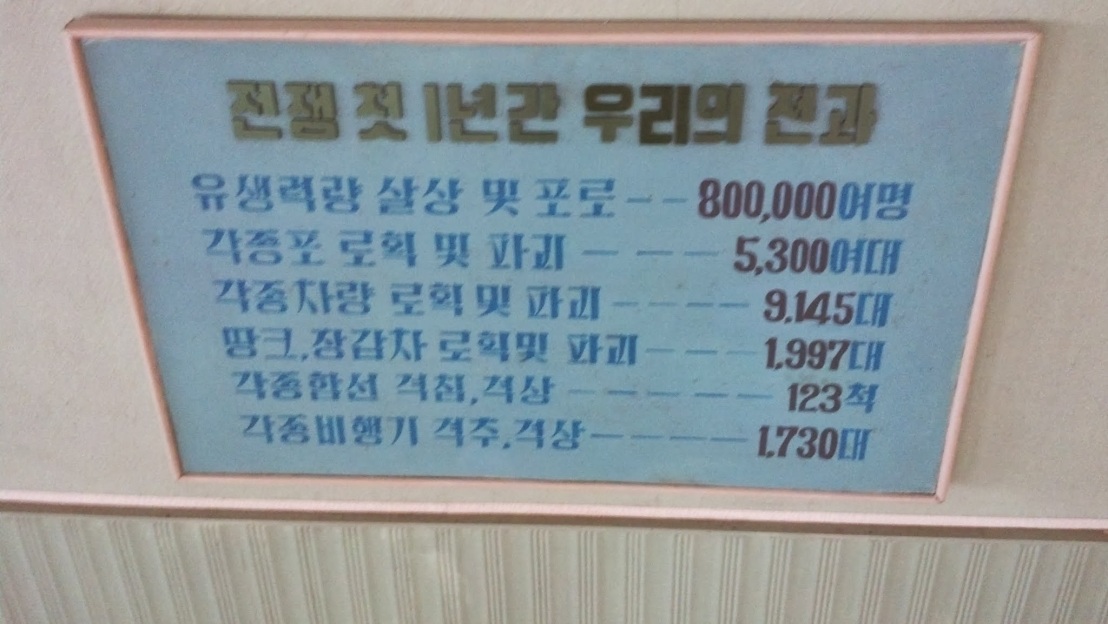
We also later went go to a monument commemorating when Kim Il Sung visited (throughout North Korea, when any of the Kims visit any important site, there’s always a huge plaque to commemorate it, as well as one of the quotations they said. Finally, we got onto the bus and began to head back. The drive itself was quite beautiful with all of the trees changing colors. While the DMZ was an incredible experience, it felt good to be heading back.
Final stops in Kaesong
The next stop was another tall bronze monument of Kim Il Sung in Kaesong, at the top of a hill. The tour guides were very specific about where we could take a picture, so that we could capture all of Kim Il Sung in our picture. We then walked over to an overlook which allowed a 180-degree view of Kaesong. The guides made sure to point out the traditional architecture of the houses, which Kim Il Sung was very adamant about maintaining throughout all of the turmoil. In the background, I could also hear what sounded like a recorded tape stuck on a loop of a dog barking. Just another part of the facade, I suppose.
The next stop was lunch. Again, it had the traditional set up of a store on the first floor, restaurant on second floor. Except apparently this time, the person running the gift shop on the first floor didn’t get the memo, and pulled the curtains closed when she started to see us. I peered through and saw that the counters were empty, unlike the typical everyday scene when there is lots of stuff on them. But why would they take the stuff off the counter every day and then put it back? It’s not like there is any petty theft in North Korea. Another mystery.
As usual, we were the only ones in the restaurant. There was a pretty cheesy ceiling decoration which looked like vines with plastic pumpkins hanging off of it. Do North Koreans not know that pumpkins grow out of the ground, not off vines?
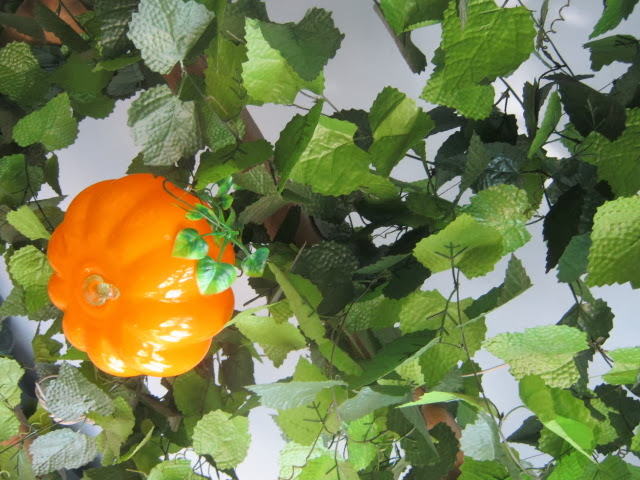
The meal itself was rather interesting. If you’re familiar with Korean cuisine, you probably understand the concept of banchan, the small complementary small cold dishes served at the beginning of a meal, and usually are refilled as often as requested.
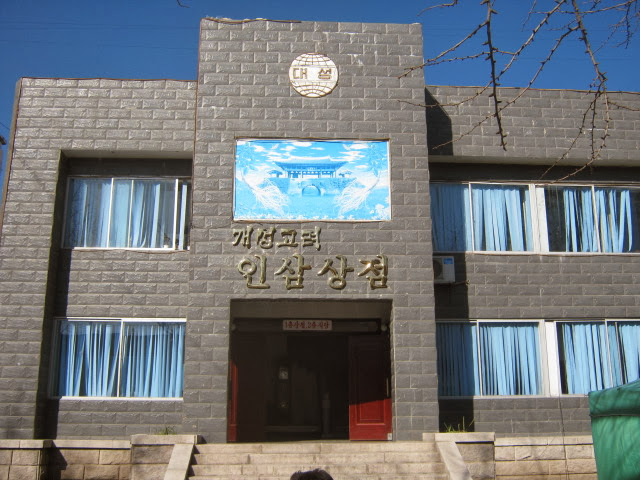
However, for this, they tried to insinuate that this was an entire meal (calling it “Korean Tapas”, as everyone at the table got their own set of 12 small dishes, some soup, some rice, and that was it. Not exactly authentically Korean. That being said, some of the dishes were actually pretty tasty. In particular, there was a very sweet, sugary, brown cake-like dish with some holes in it which I had never seen before, but was delicious. When we left the restaurant, I saw someone (presumably from the restaurant) selling hot freshly made ones on the street, so I presume it was somewhat authentic/popular/a local delicacy. This was also the only street food I saw on the entire trip. Naturally, the guides did not eat with us this time either.
We then got back on the bus and started on the road to Pyongyang. We stopped at the same unmarked rest stop along the way. The drive had more fields of nothing but cabbage. There were also quite a few really young kids wandering all by themselves on the highway. We passed all of the same check points, but given that it was light out, the guards recognized the tour bus and moved the gate manually for us each time without any lights flashing, special codes, or people needing to get out (other than the first time).
Again, I tried to stay awake for the entire drive, but I dozed off a little bit. When I was awake though, one of our guides asked me about American perceptions of North Korea. I first made him promise me that what I said wouldn’t get me in trouble, which he agreed to. Even after that, I phrased all my answers starting with, “The american media tells us _______”, mostly touching upon how we hear that the quality of life is low, people have poor health care, people are starving, etc. I of course also mentioned that everything that I’d seen this trip so far contradicted what I heard in the American media, and how it was so nice to actually see the truth for myself firsthand. Most importantly, I said all of this with a straight face.
As we started to enter Pyongyang, our tour guide pointed out a gas station which we passed by. I’m almost positive it was not there when we left Pyongyang or the previous time we drove by that area. Regardless, he pointed out that gas was extremely expensive, which was why people tended to rely on public transportation (not mentioning that only the wealthy could afford cars).
We then stopped at the reunification arch, which had identical, symetrical women on either side (representing the two Koreas, expressing hope that the Koreas will one day be reunited).
Grand People’s Study House
Our next stop was what they called the “Grand People’s Study House” – their fancy word for a library. After the first knock on the door, no one answered. Our guides made some calls. A tour guide then greeted us. We went inside, and were greeted by an enormous seated statue of Kim Il Sung . The tour guide then started giving us an introduction (in Korean, translated by our guide), but I soon lost interest. Right as we walked in, a young Korean boy scurried up the stairs. The building was lavish and enormous. They showed us around several rooms, where we saw students studying, looking fairly normal. Some were looking at us, some were not. They showed us the books, even showing an old book that said “NBA” – some sort of guide to the basketball league (from the 90s). Some of the students were using computers. I ask if I could use one; expecting to be denied, they said sure, and the guide switched the input language from Hangul (Korean characters) to Latin (characters). It was a local library intranet though with no actual access to outside pages; mostly used for searching for books in the system. It worked when I inputted a keyword, though the books returned were 20-30 years old. Later on at a different computer, I actually did have “internet” access to a very limited internet. For fun, I inputted “google.com”, but the page could not be found. Of course.
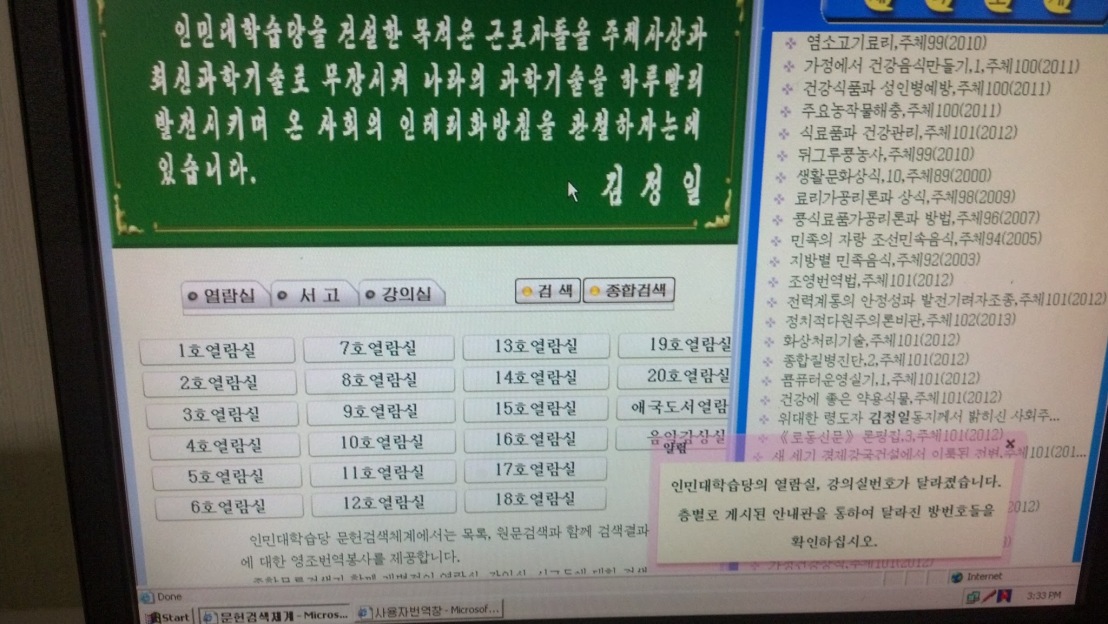
They then showed us to the main checkout desk, where they had a (what they considered to be) very advanced system, in which the librarian could request any book, and it came out on a slide. They proudly touted the variety of different languages which books were available in, and showed us a Finnish book (for the Finnish people in the group). I should also mention that there are pictures of the Kims everywhere.
We then went into the music room, where each student had their own mini-boombox. Inefficient I suppose, but somewhat technologically advanced for them. There was also a piano in the room. Remembering that I said earlier that I played music, our tour guide Oh asked me to play piano. Trying to think of non-controversial yet recognizable songs, I started with Beethoven’s “Fur Elise”, moved on to Chopin’s “Minute Waltz”, and then, remembering that they are somewhat familiar with Western music, played “Hey Jude” by the Beatles, which people recognized. I resisted the temptation to play any overtly American music.
They then invited us out on to the balcony, where we had an incredible view of Pyongyang, especially Kim Il Sung Square. There was propaganda in every direction, including several government ministries. I could also see the Juche Tower straight ahead. The guide explained that the green roofs were a sign of royalty, or something along those lines. We then exited through the bookstore located within the library (more propaganda material, of course), and got back on to the bus to head to the Victorious Fatherland Liberation War Museum (or, Korean War Museum).
Next: the amazing propaganda of the Victorious Fatherland Liberation War Museum, singing karaoke, and my departure.

